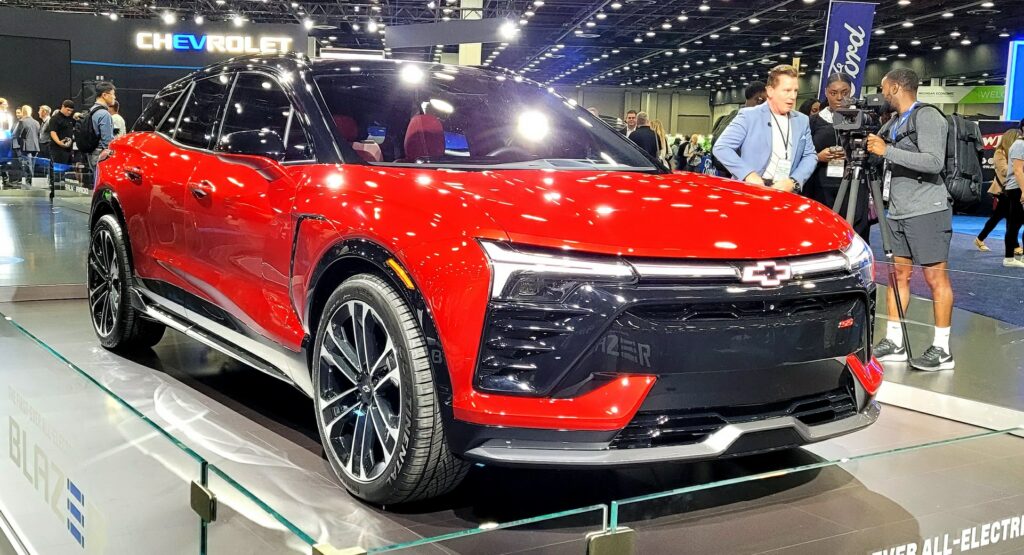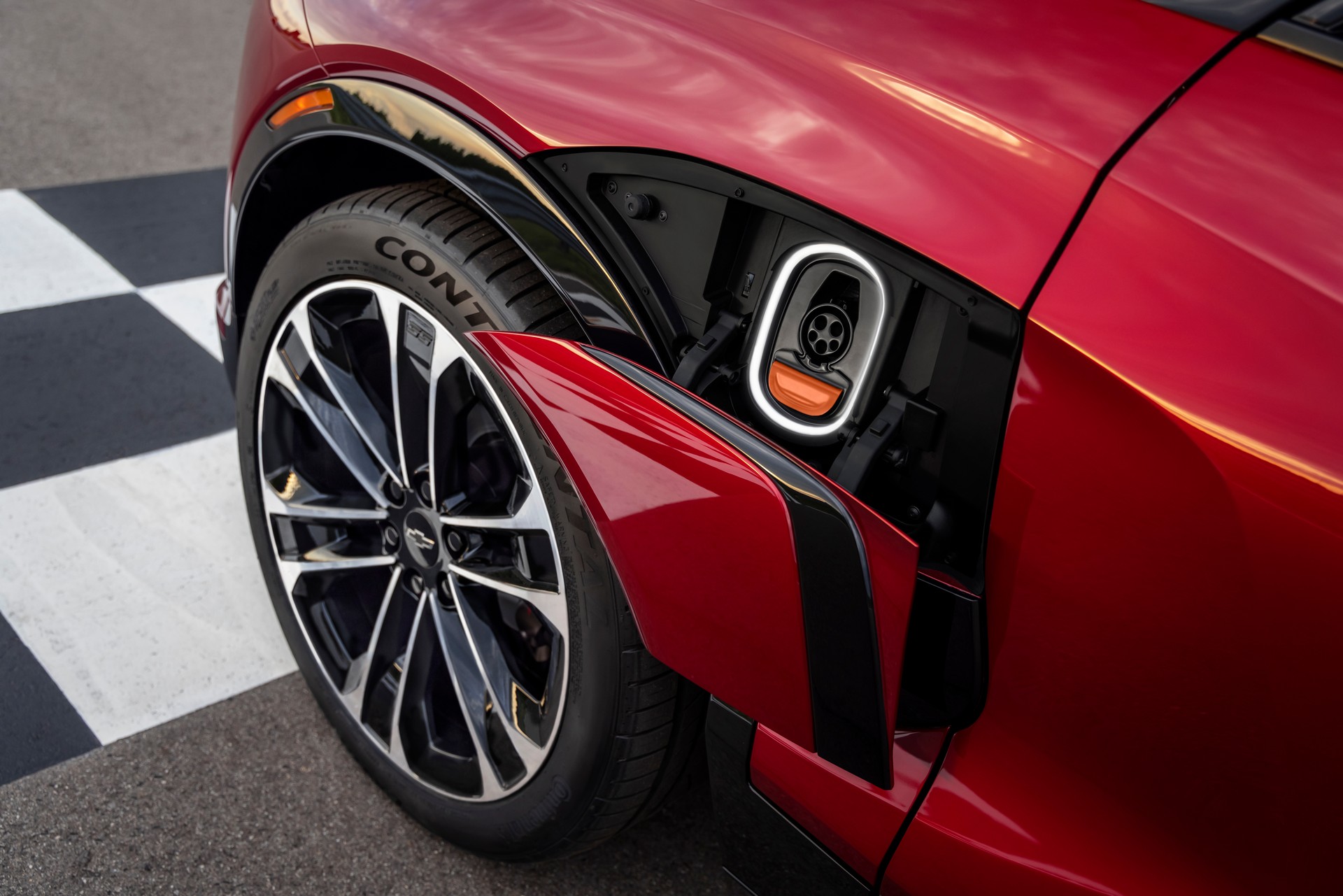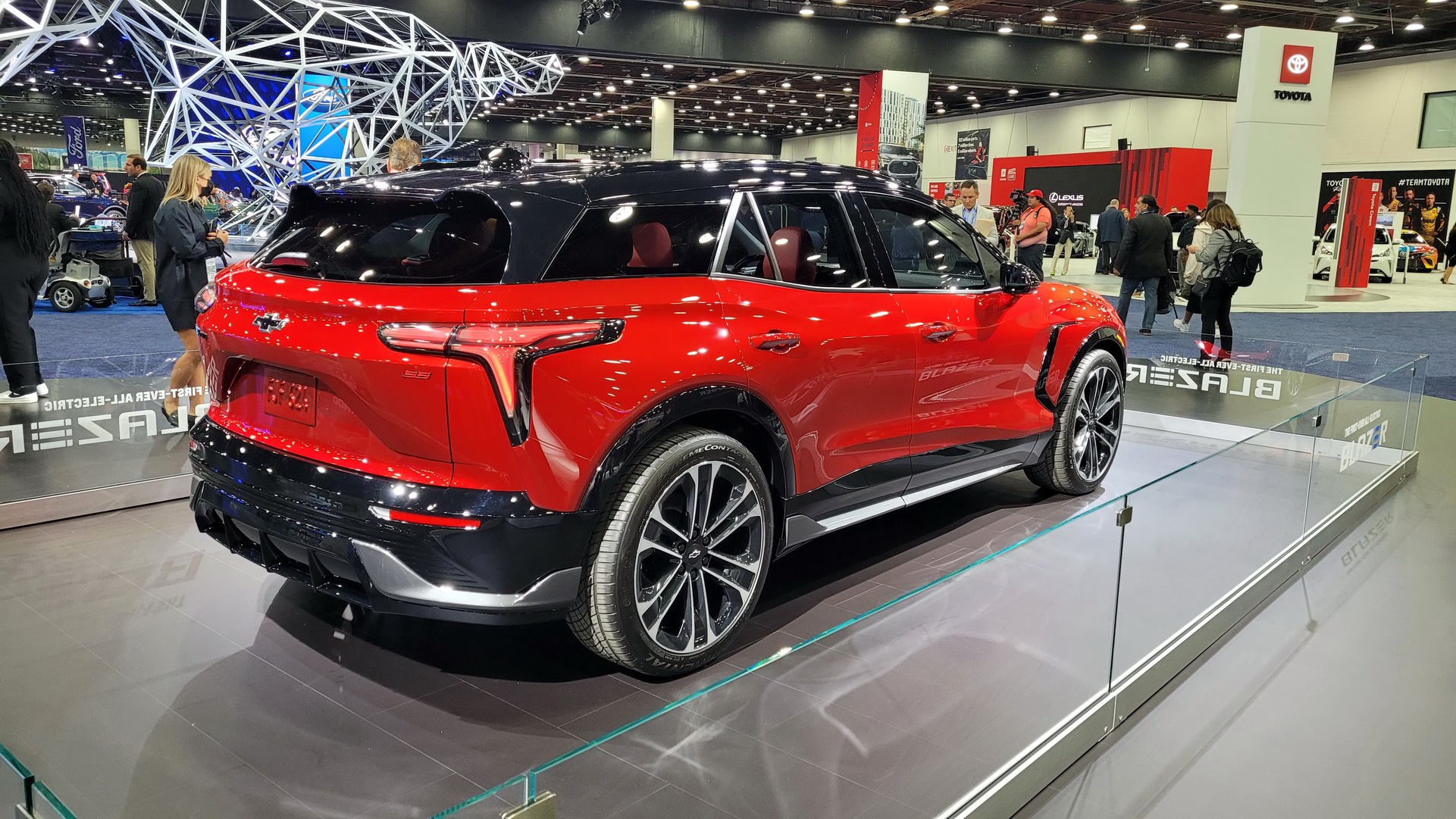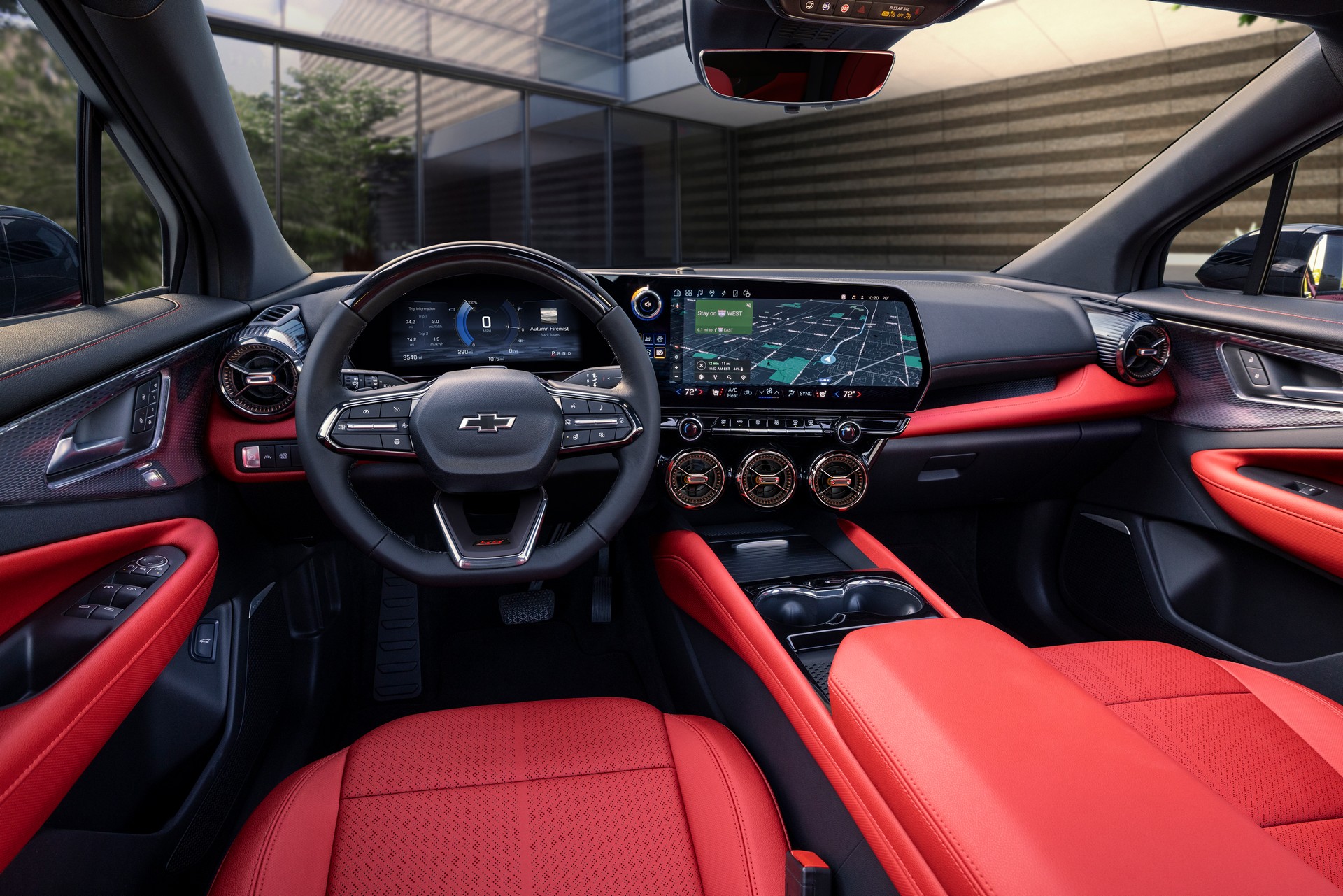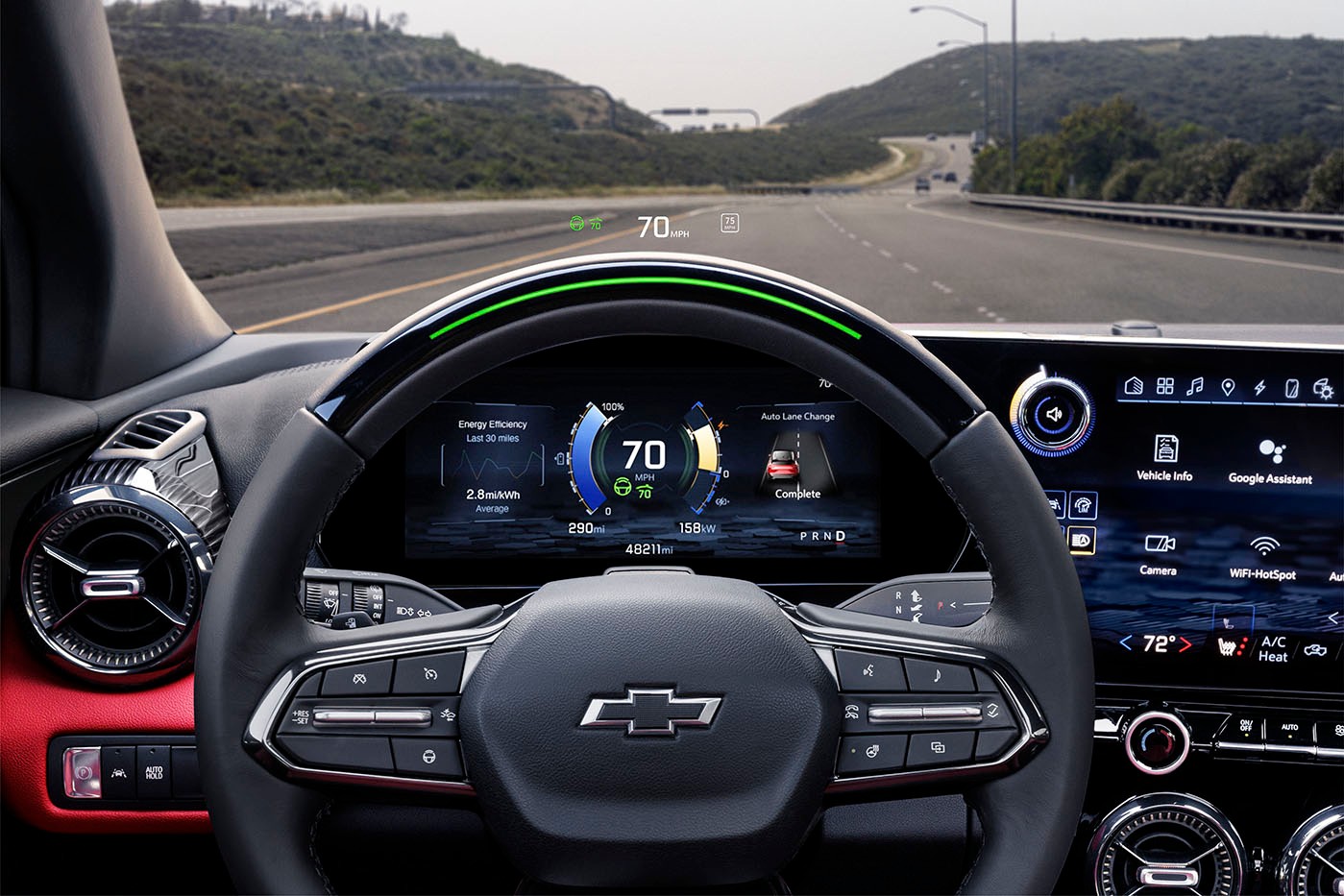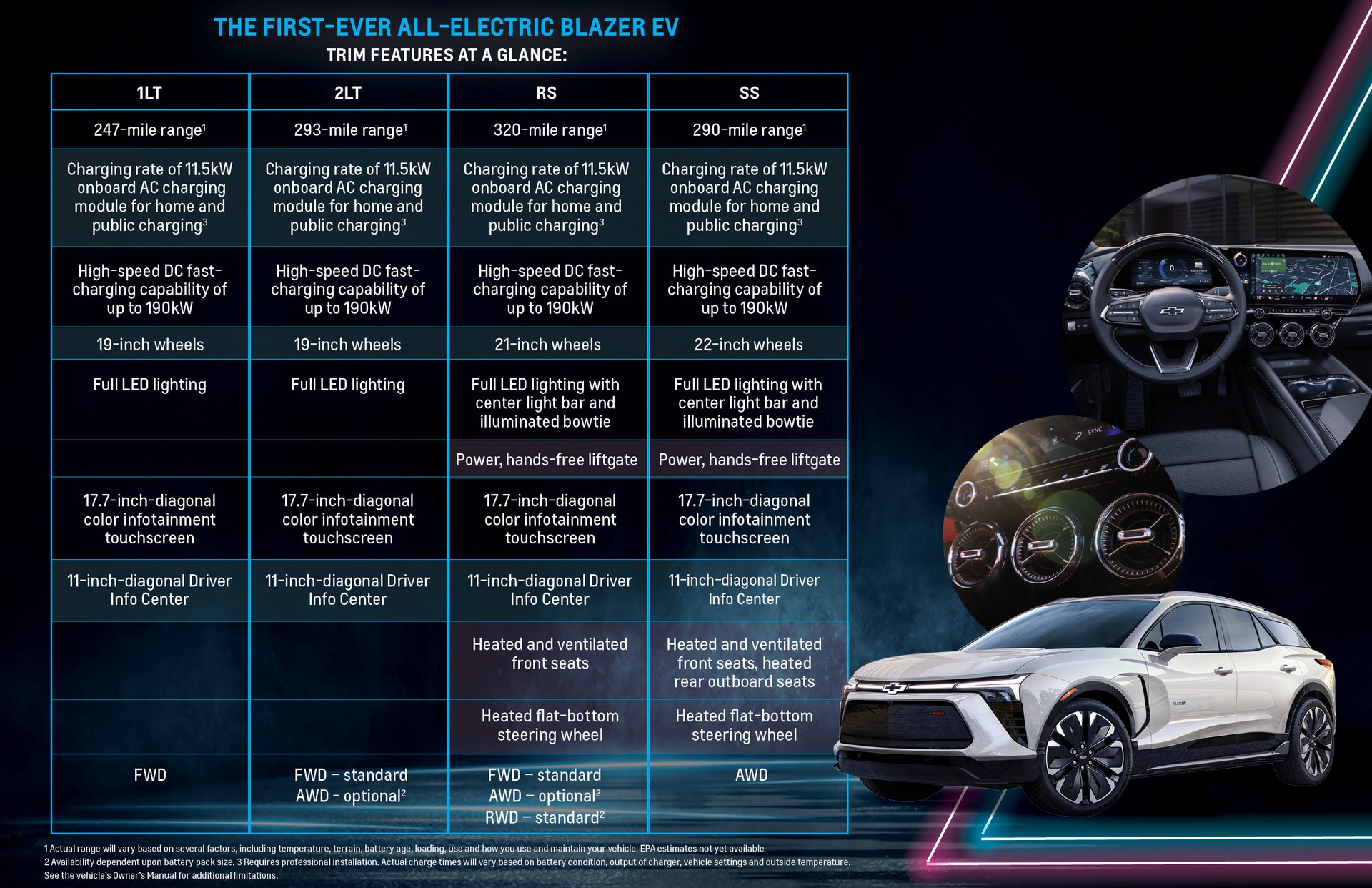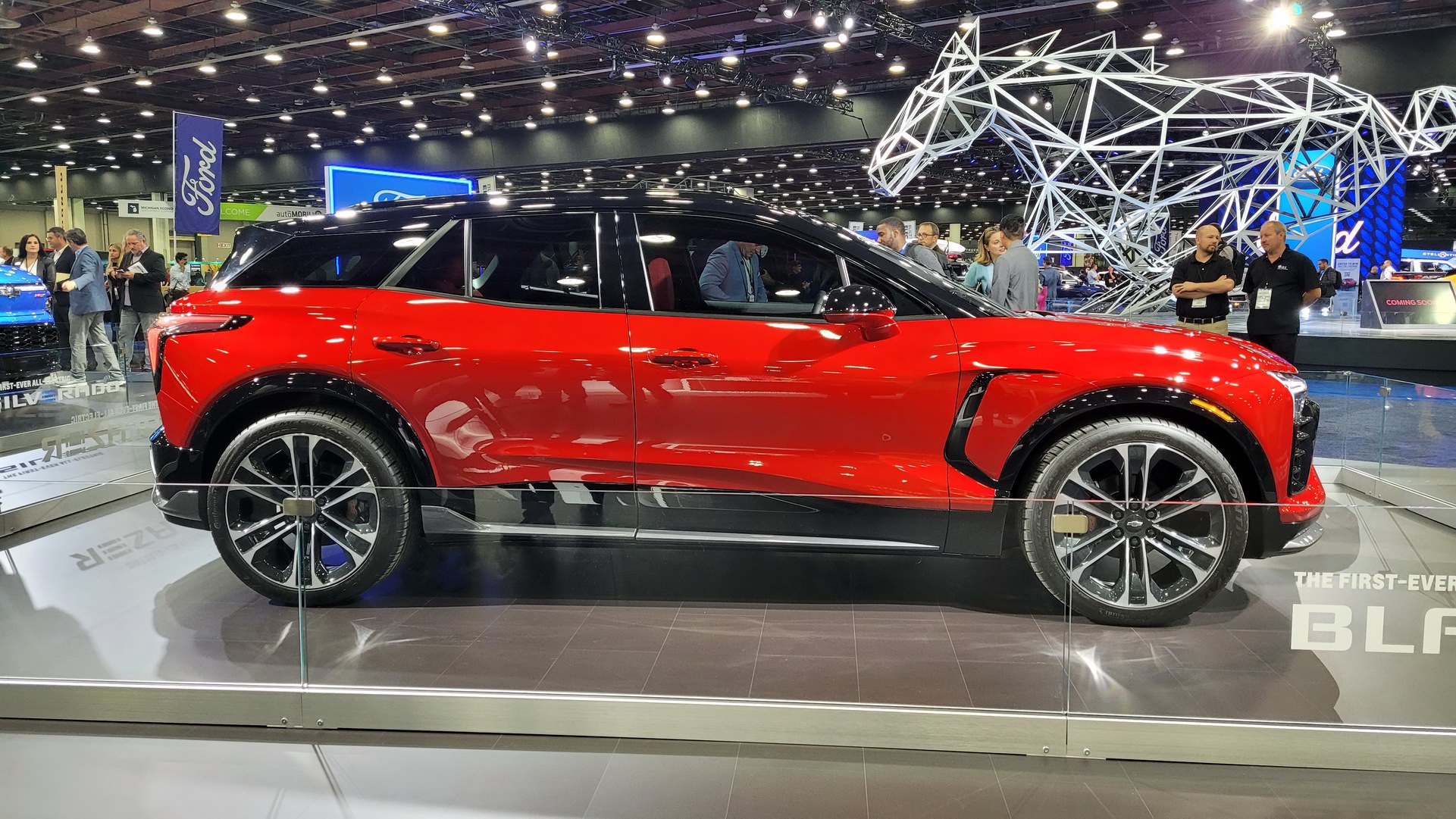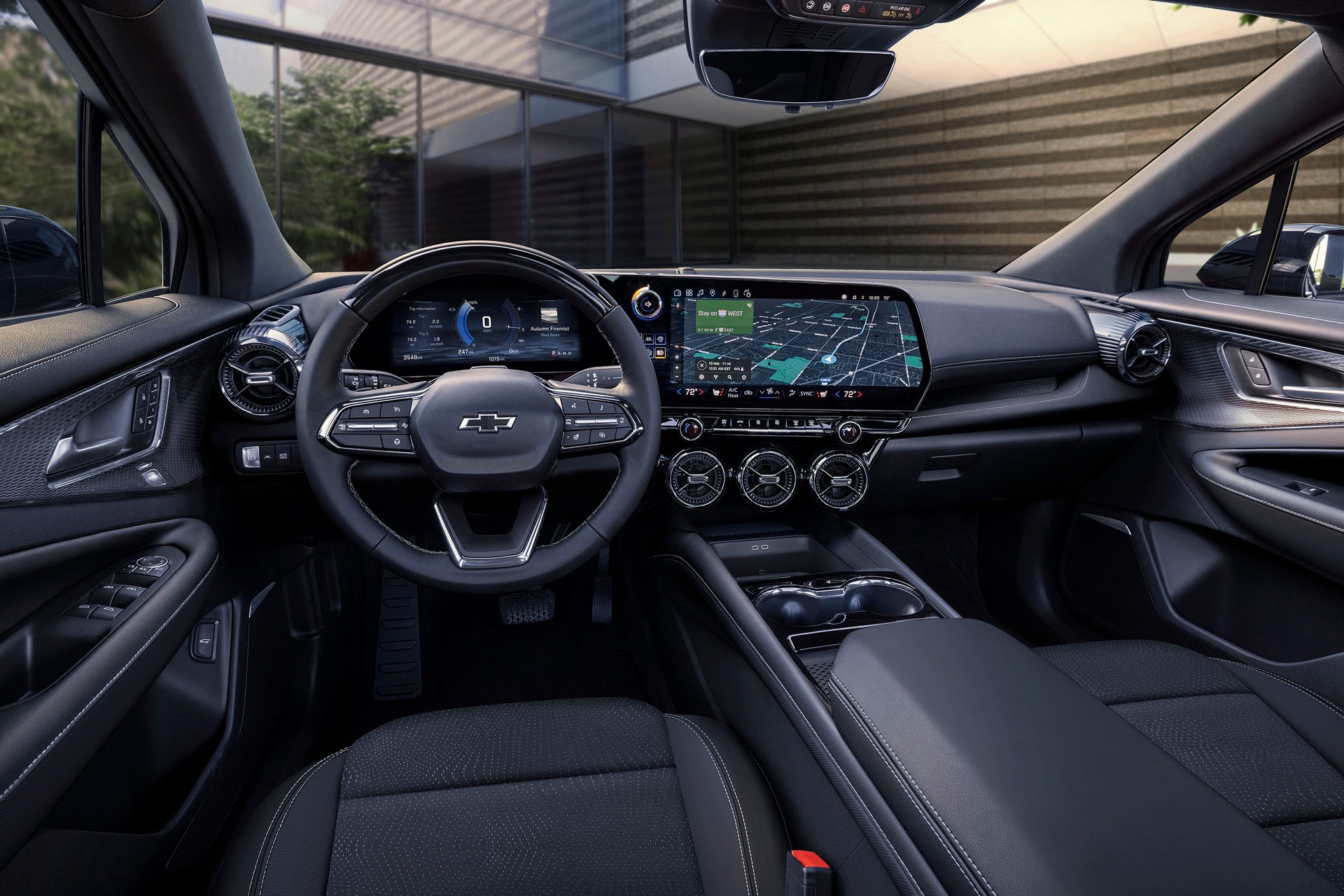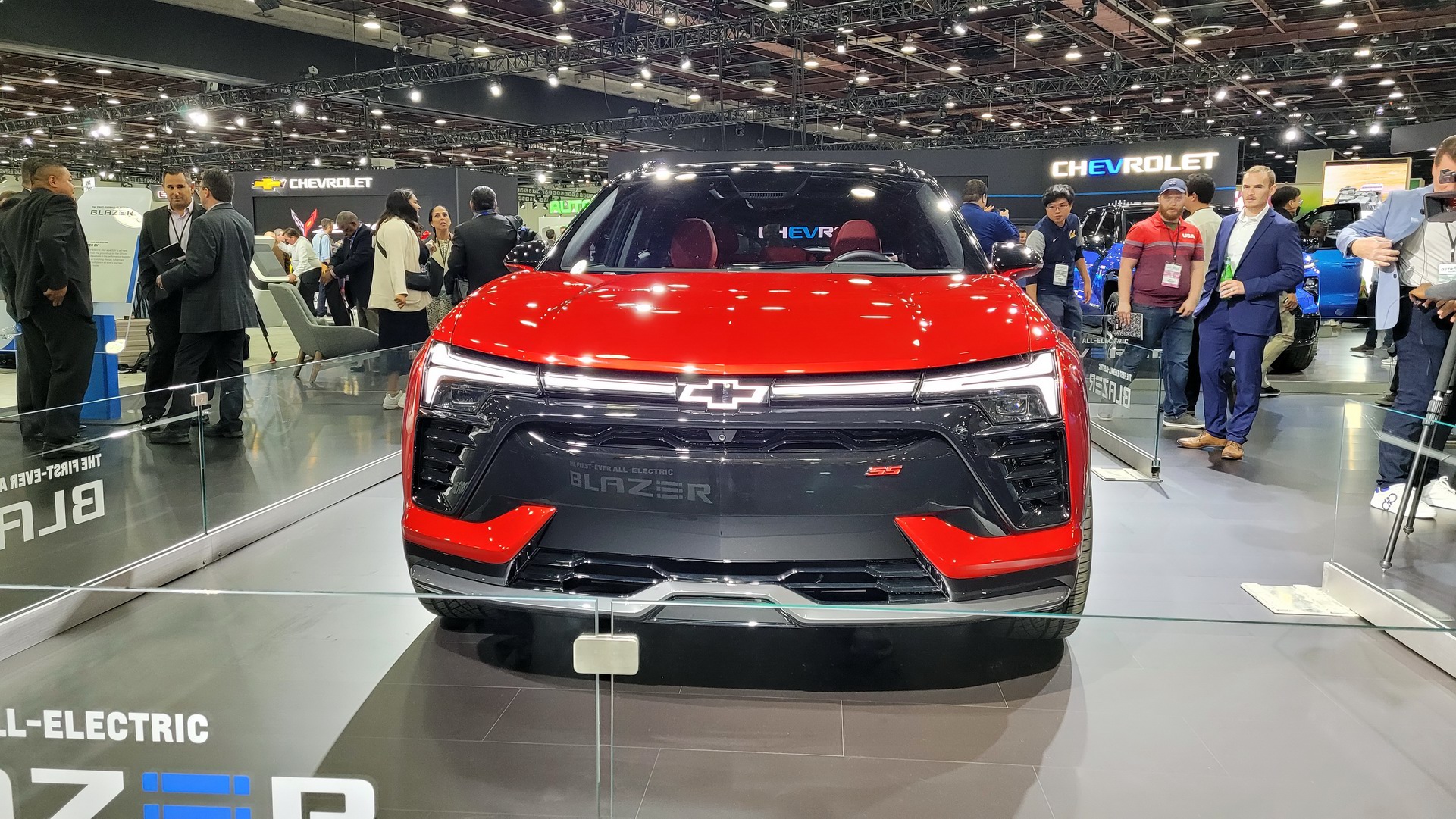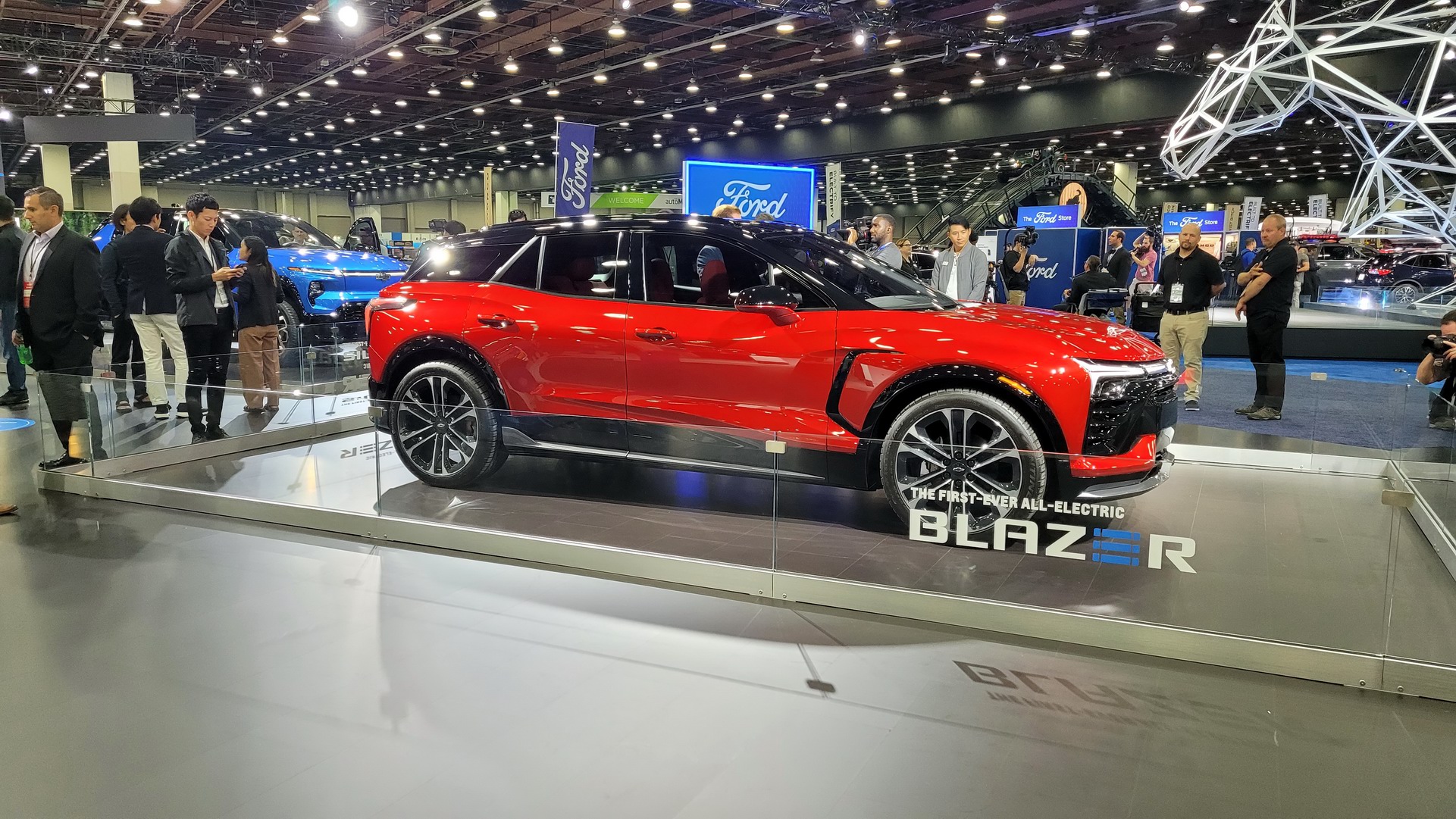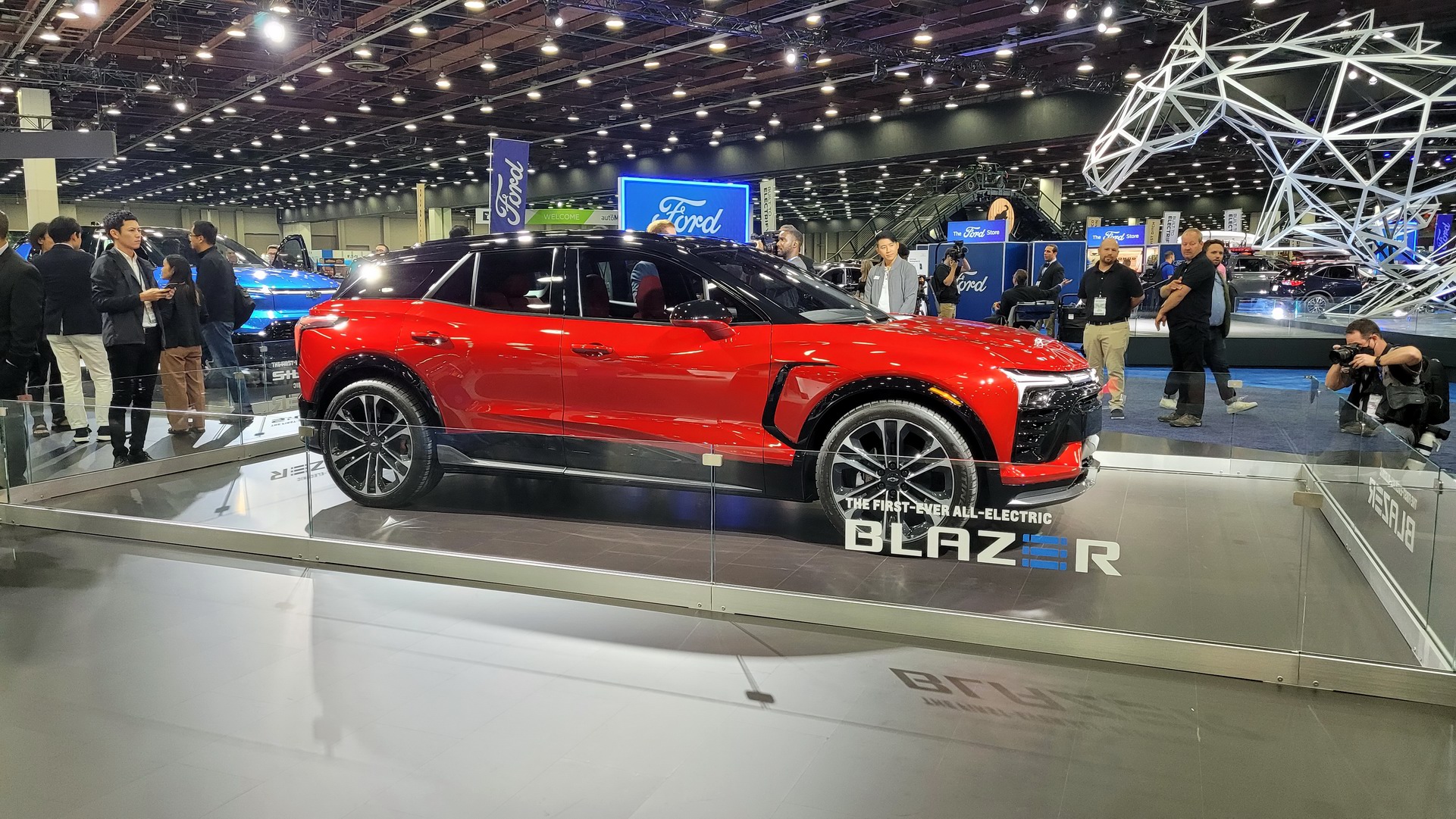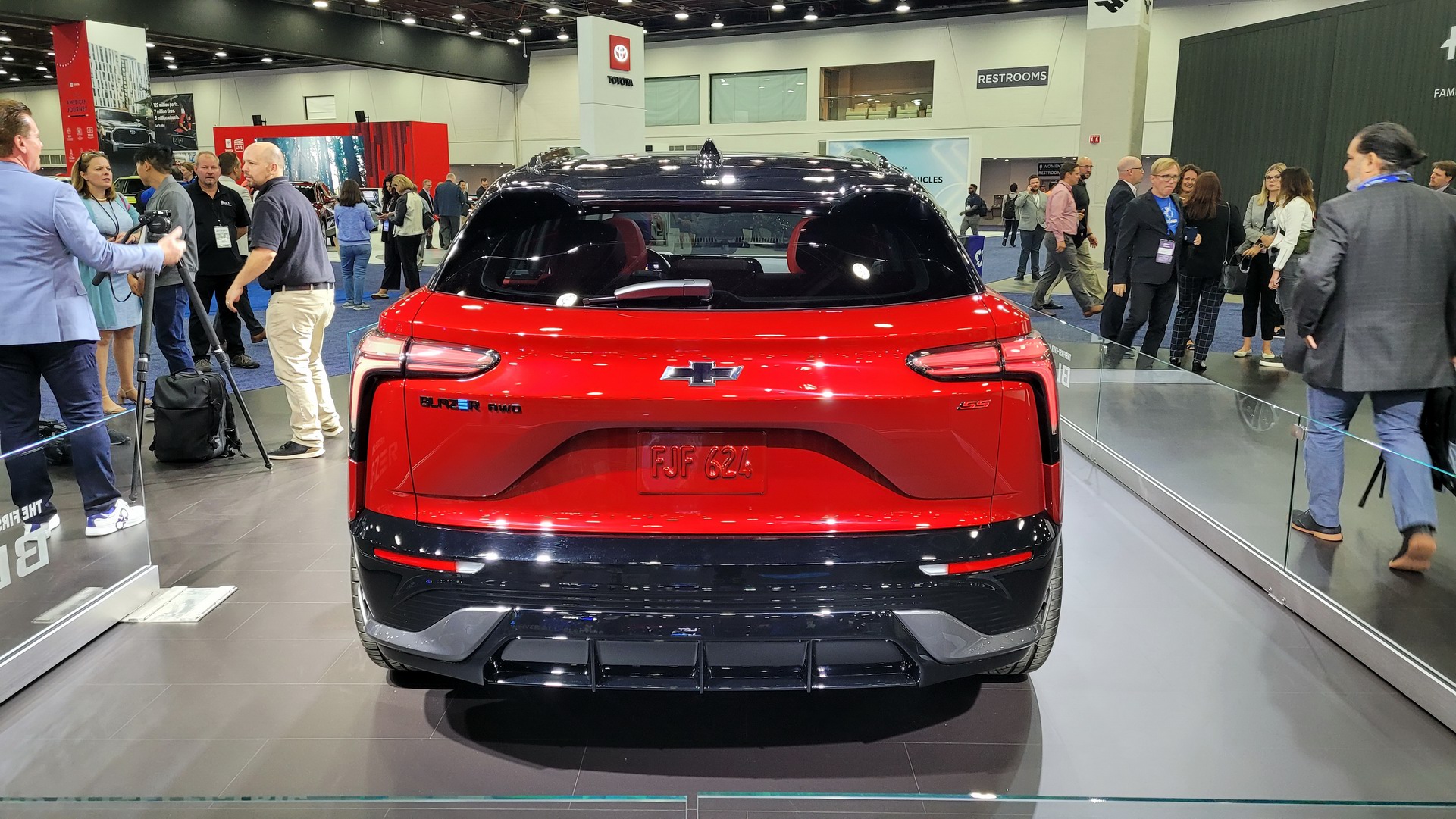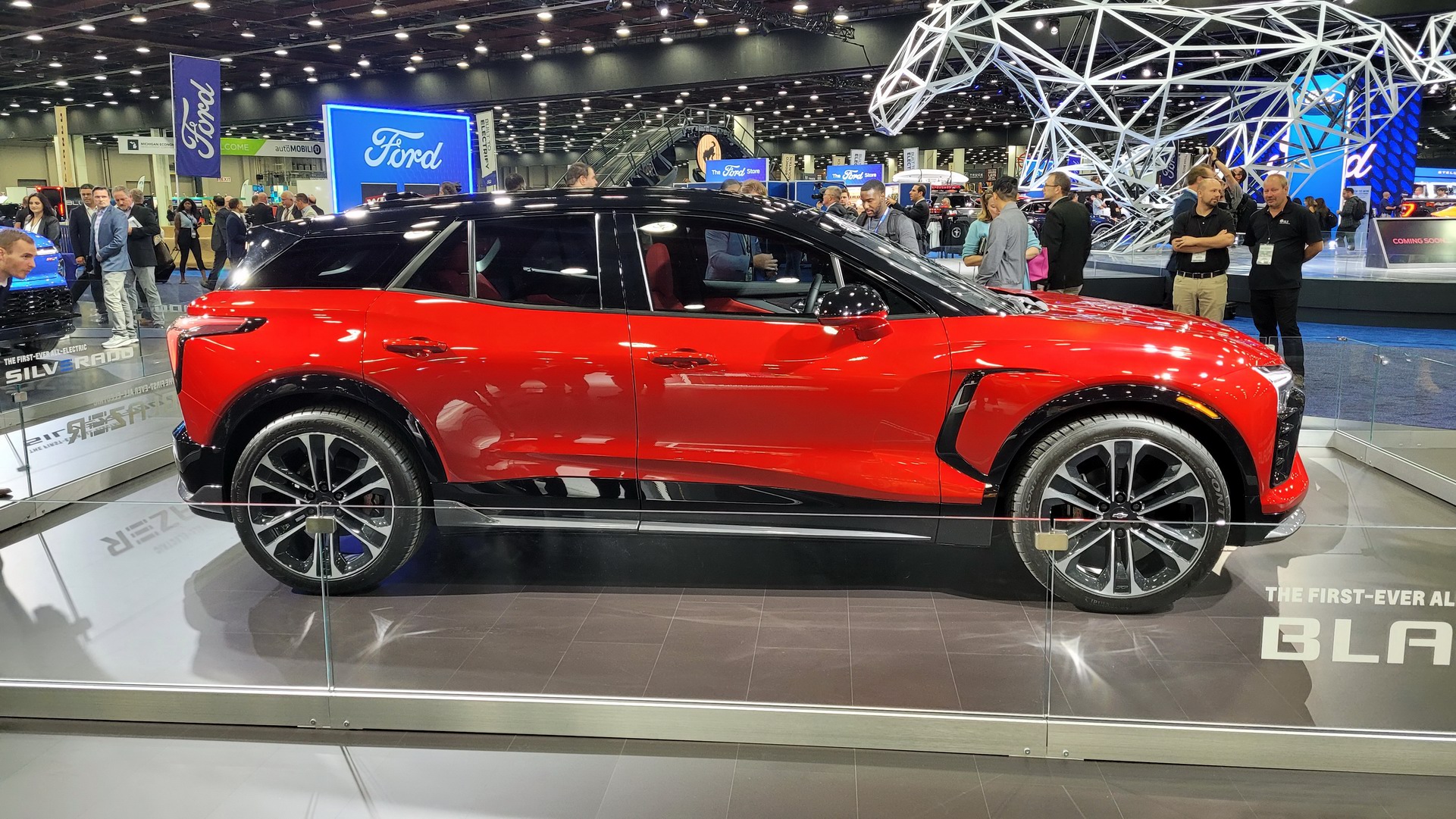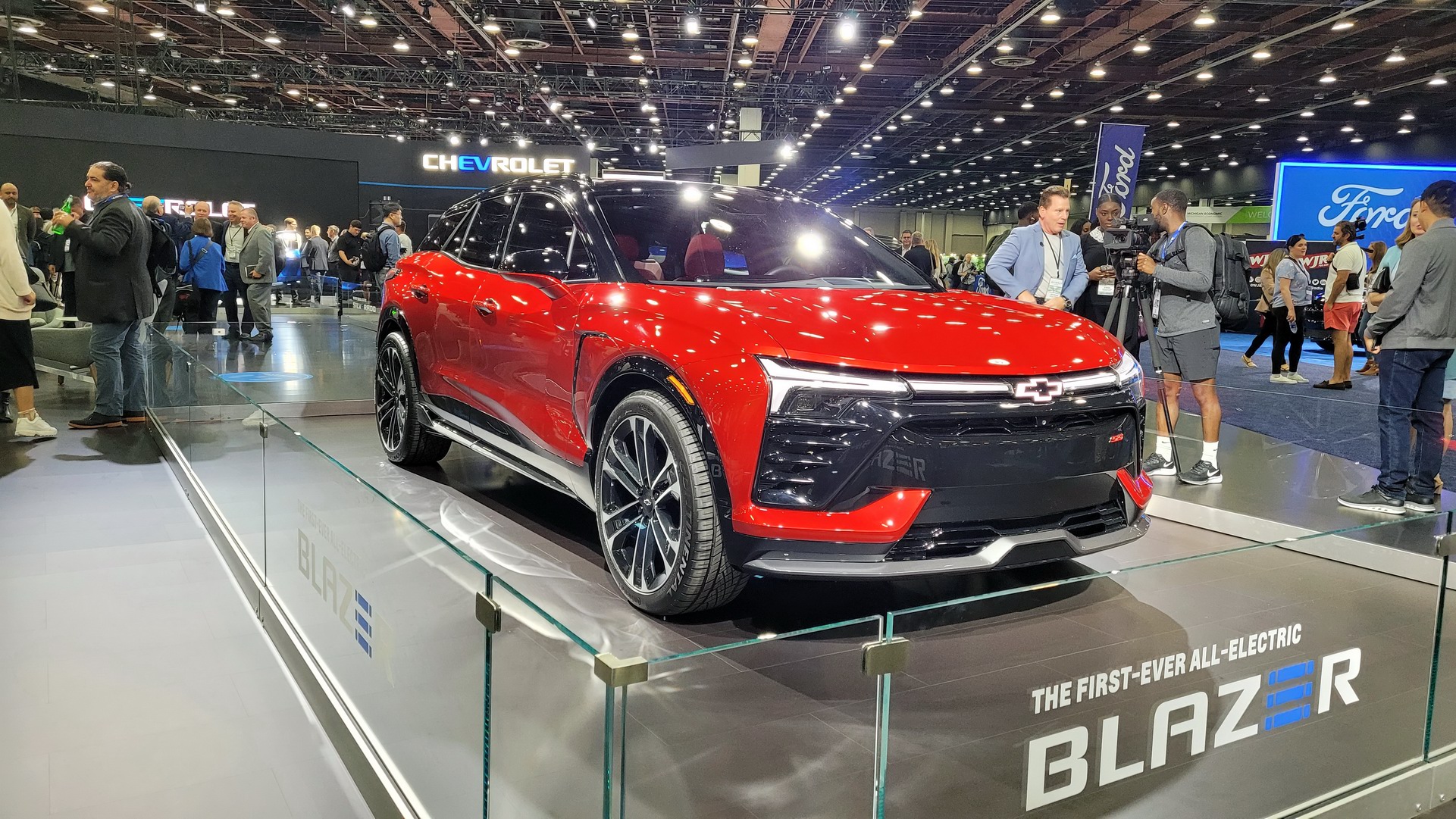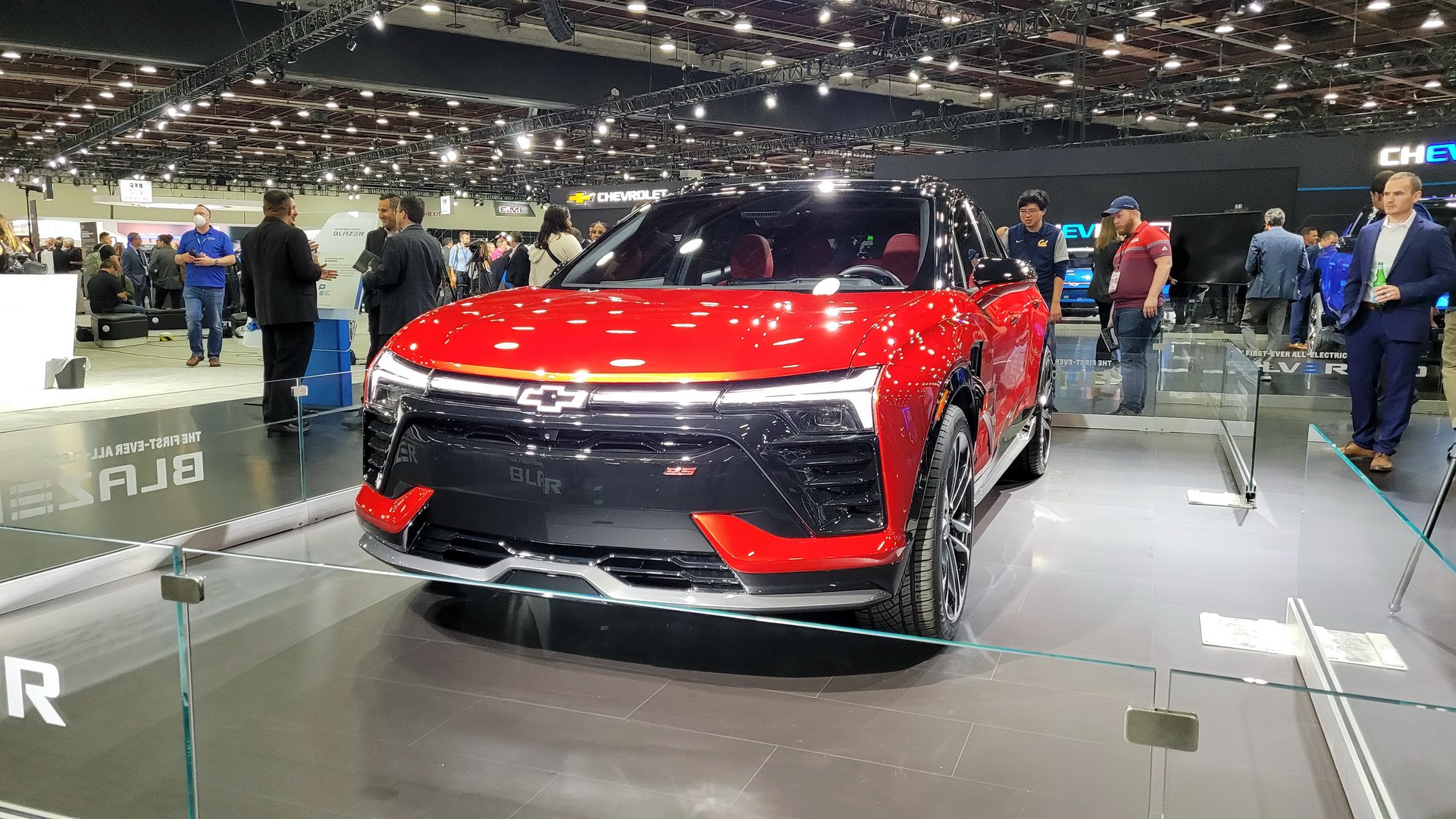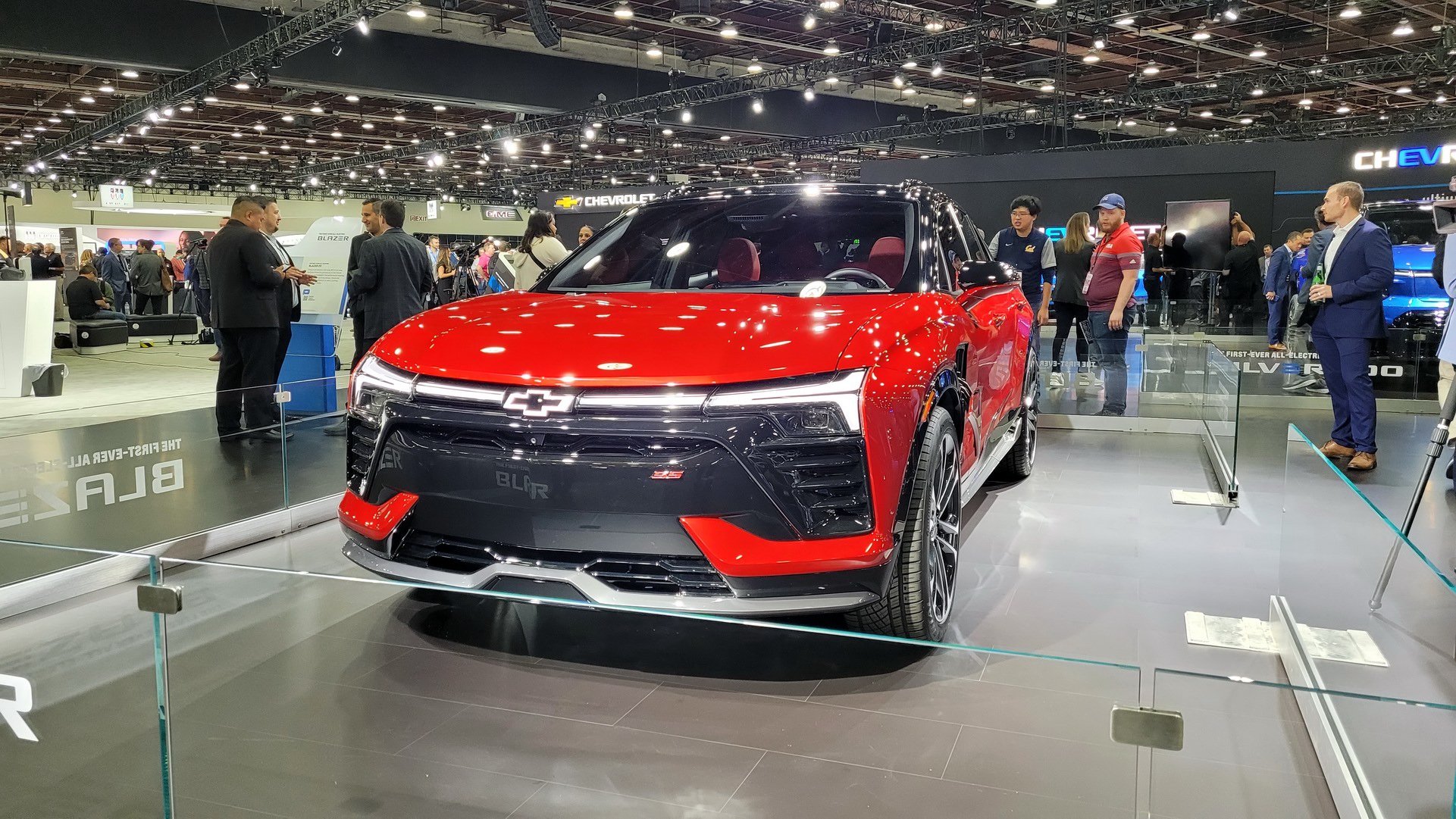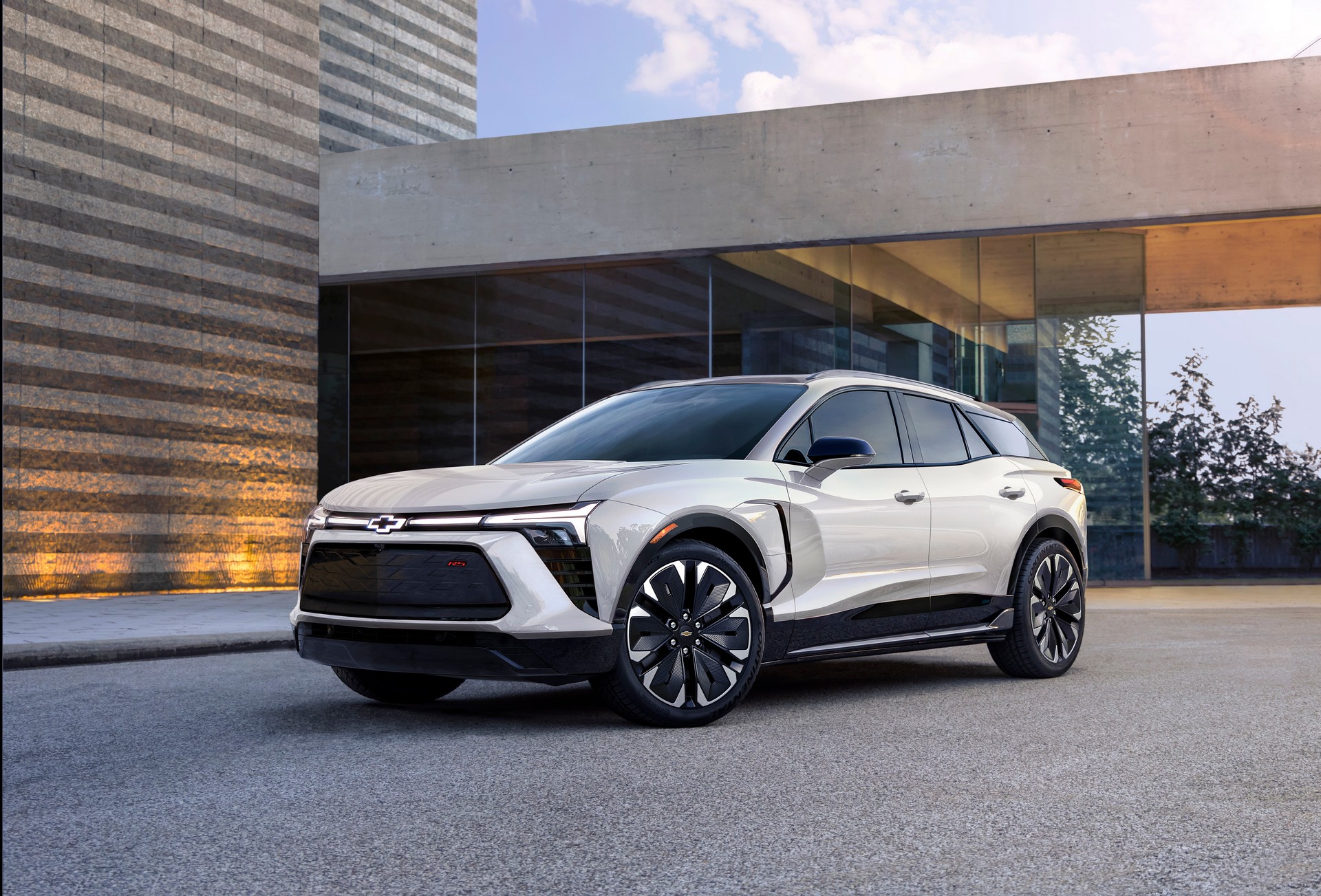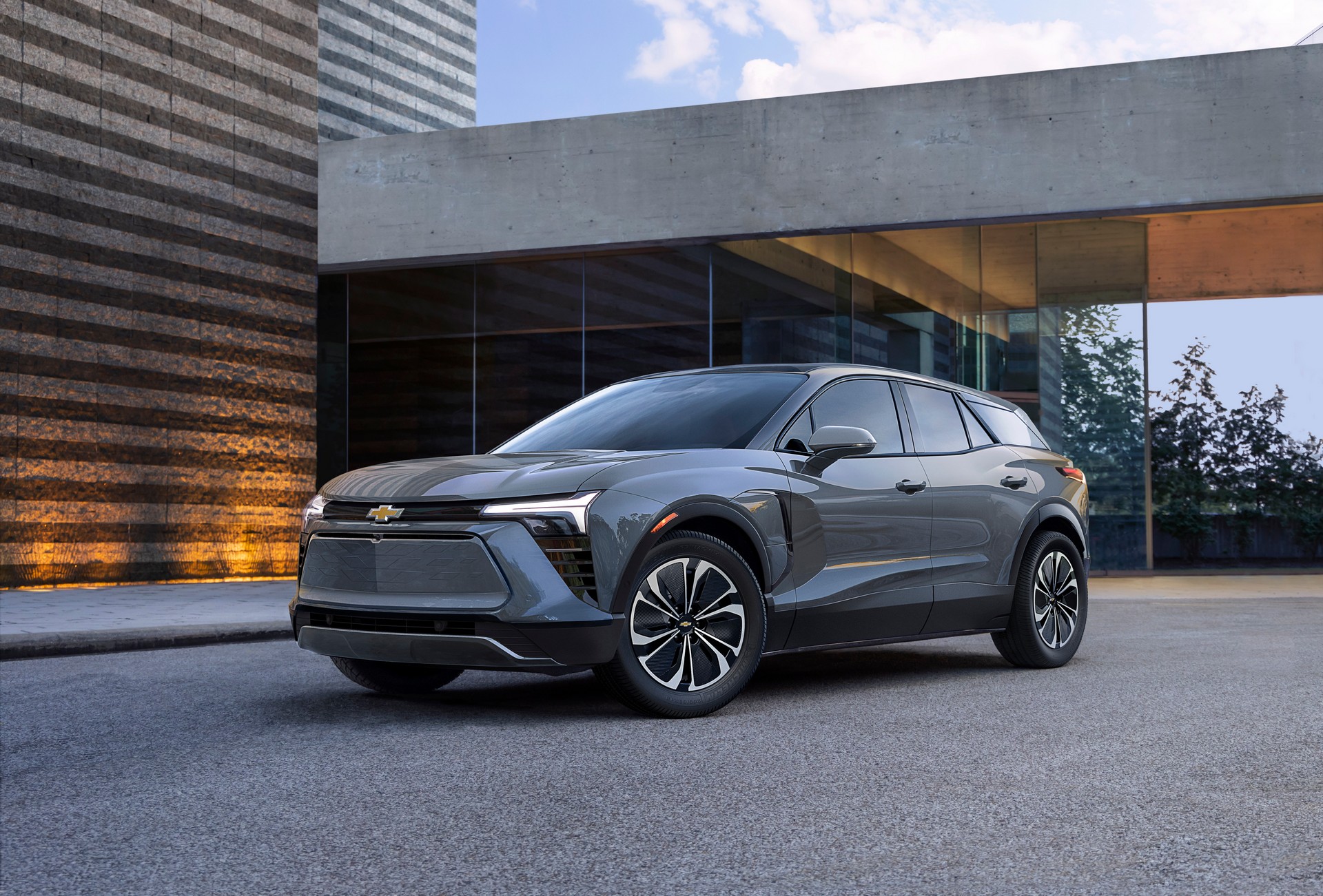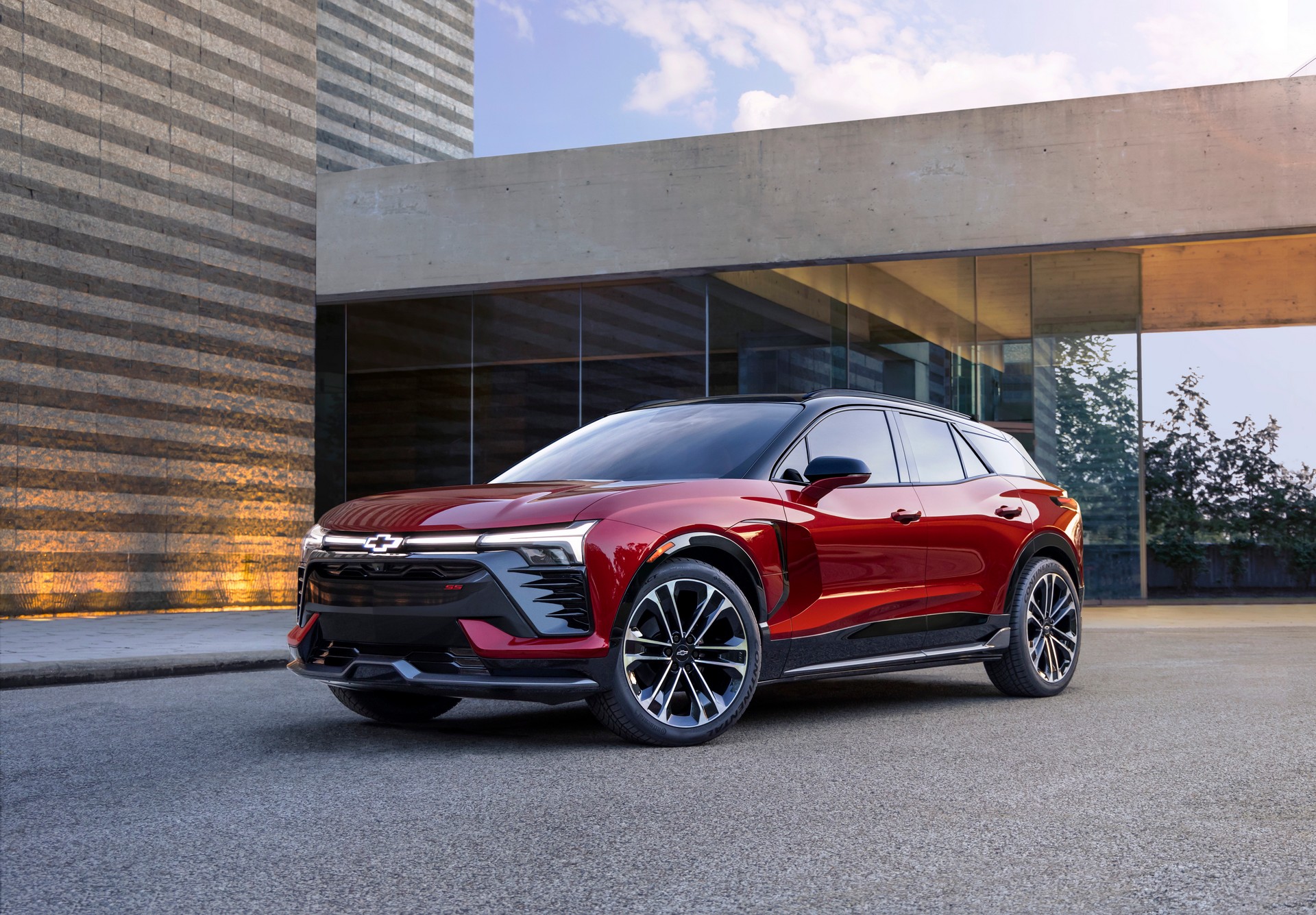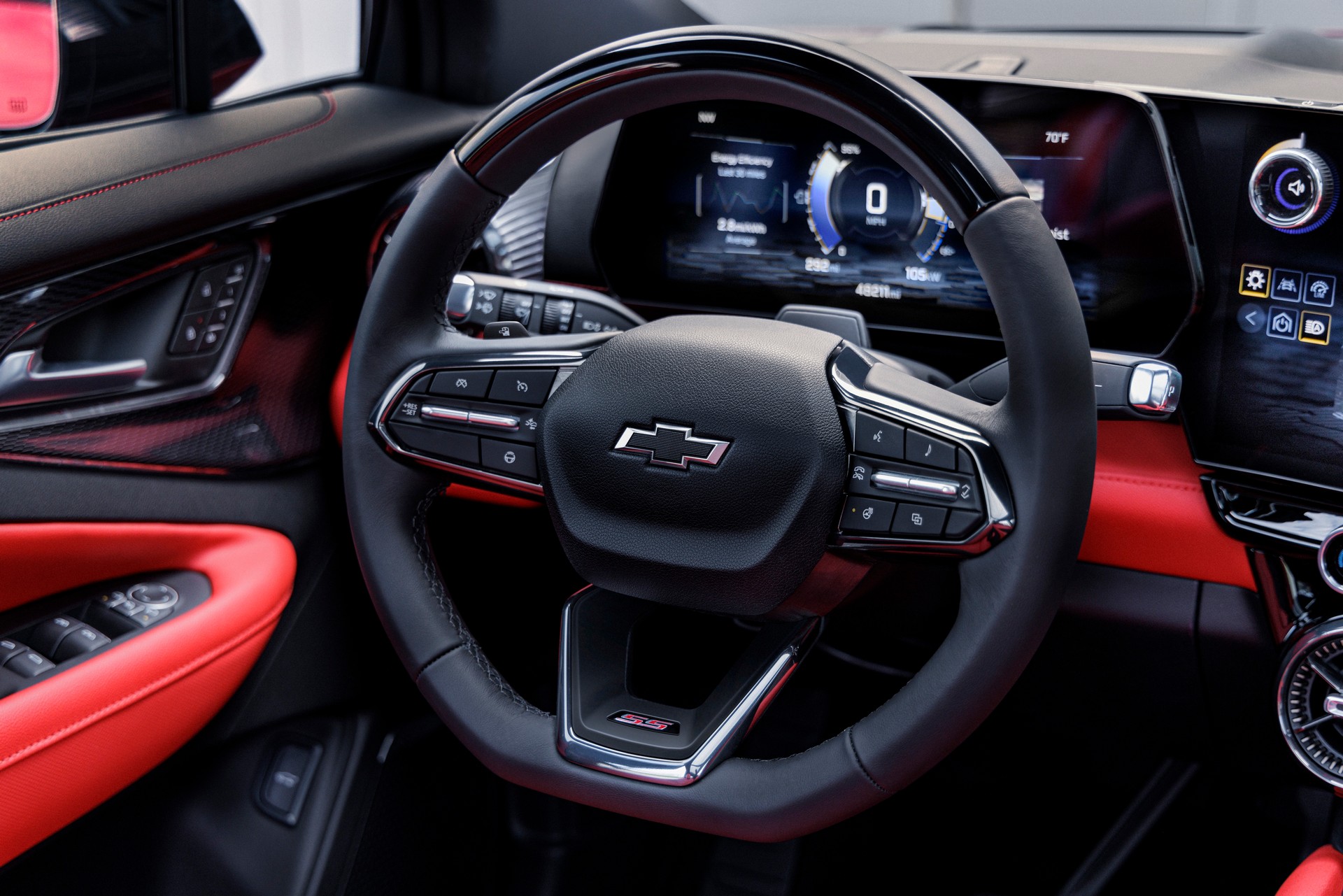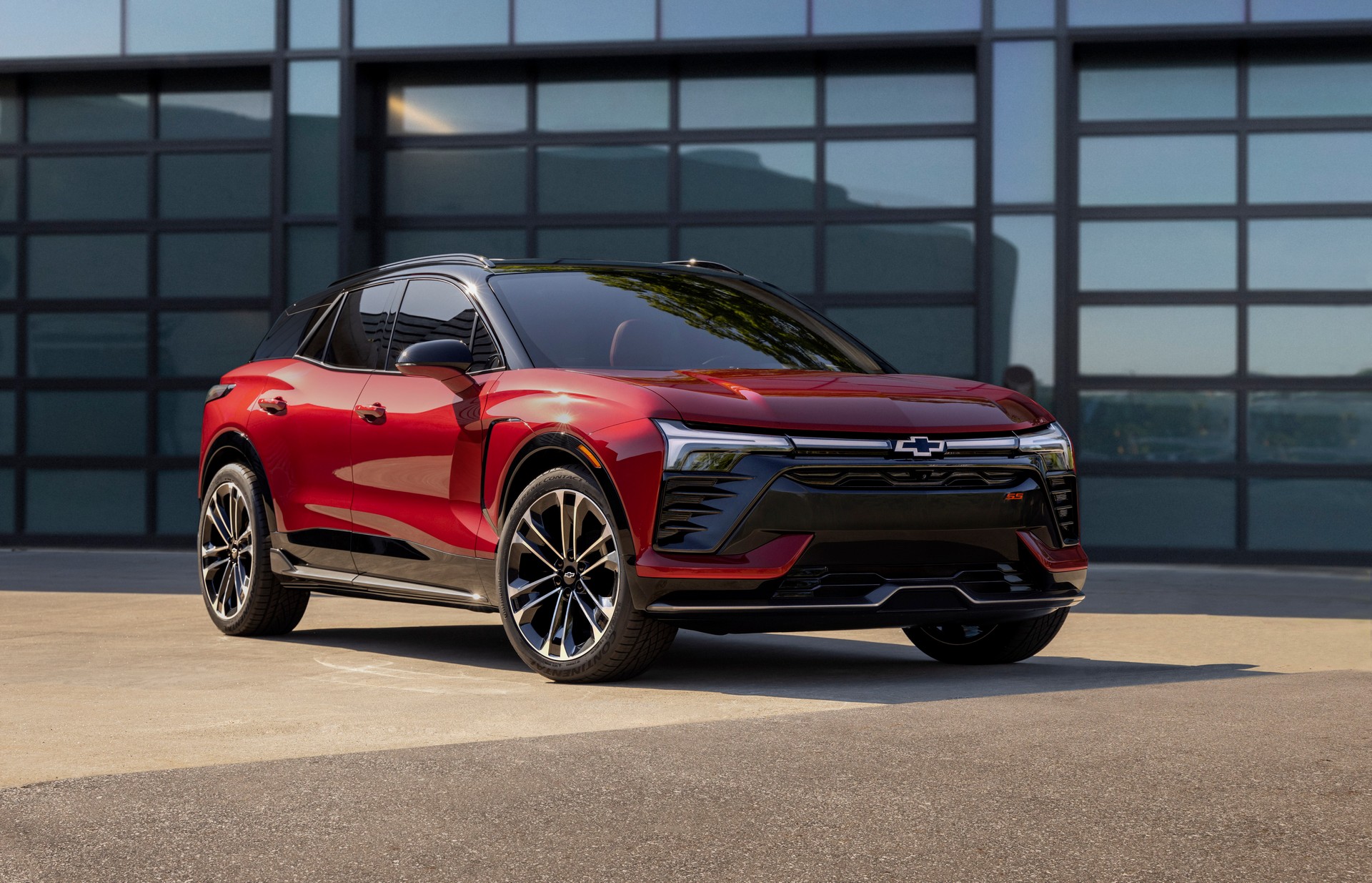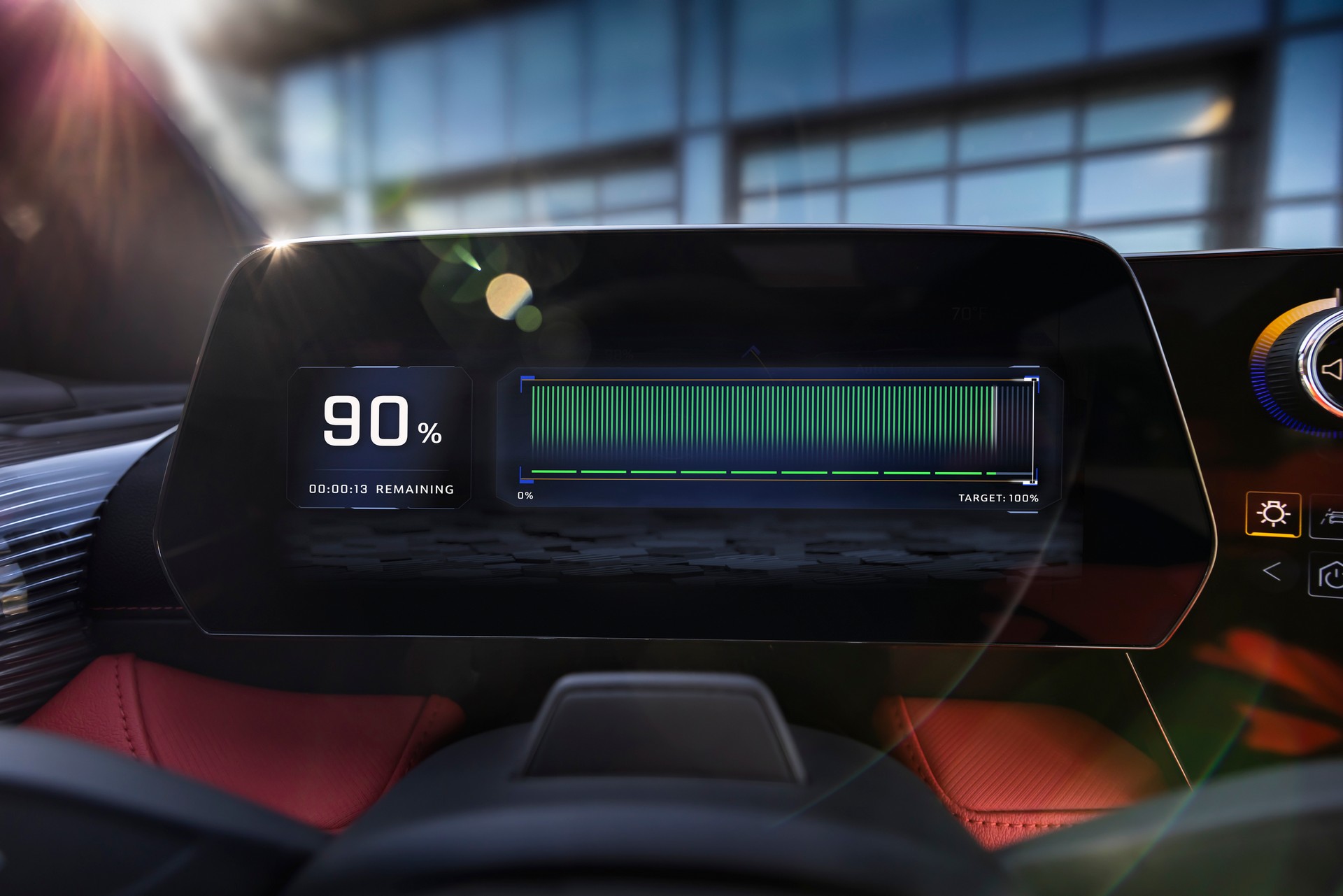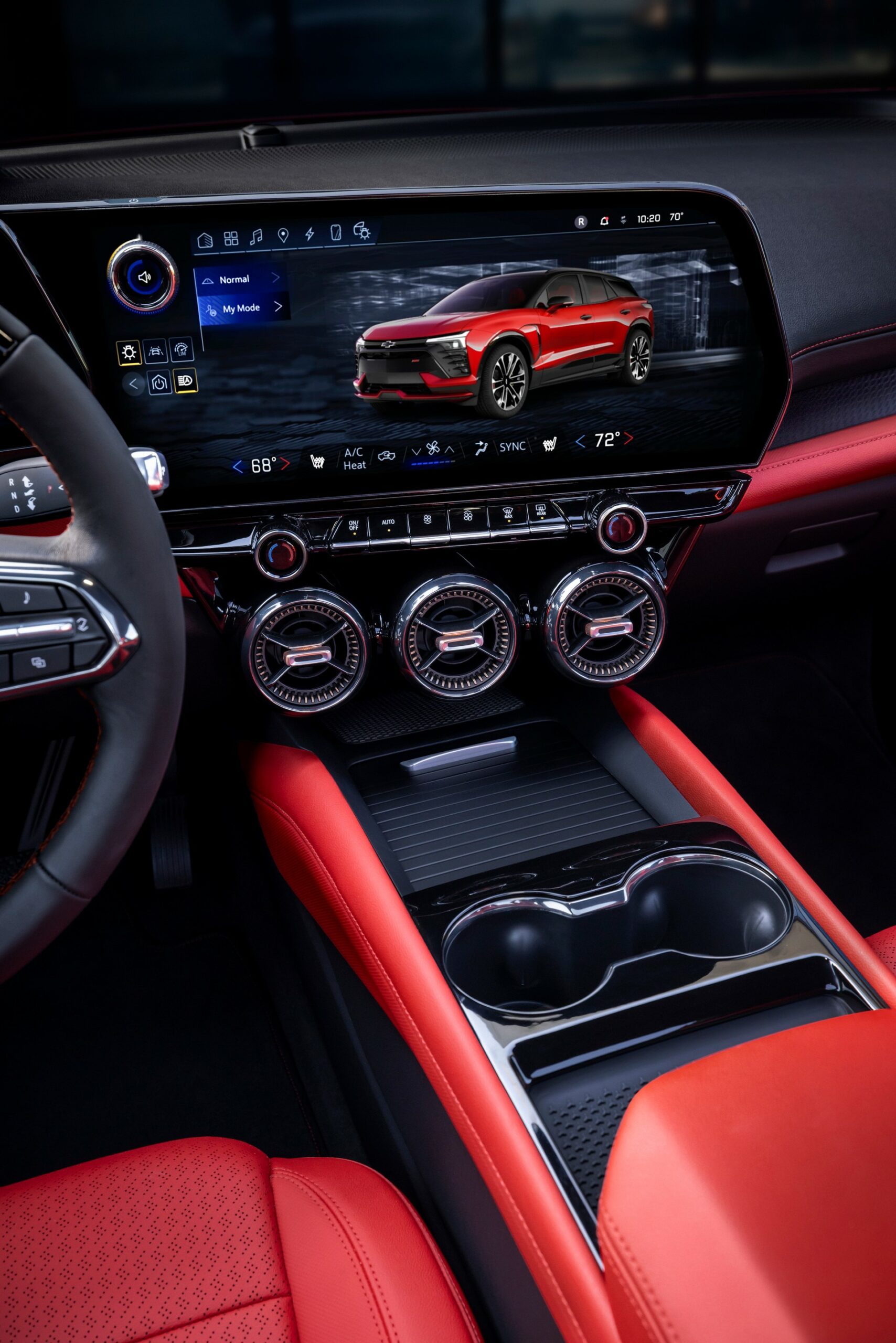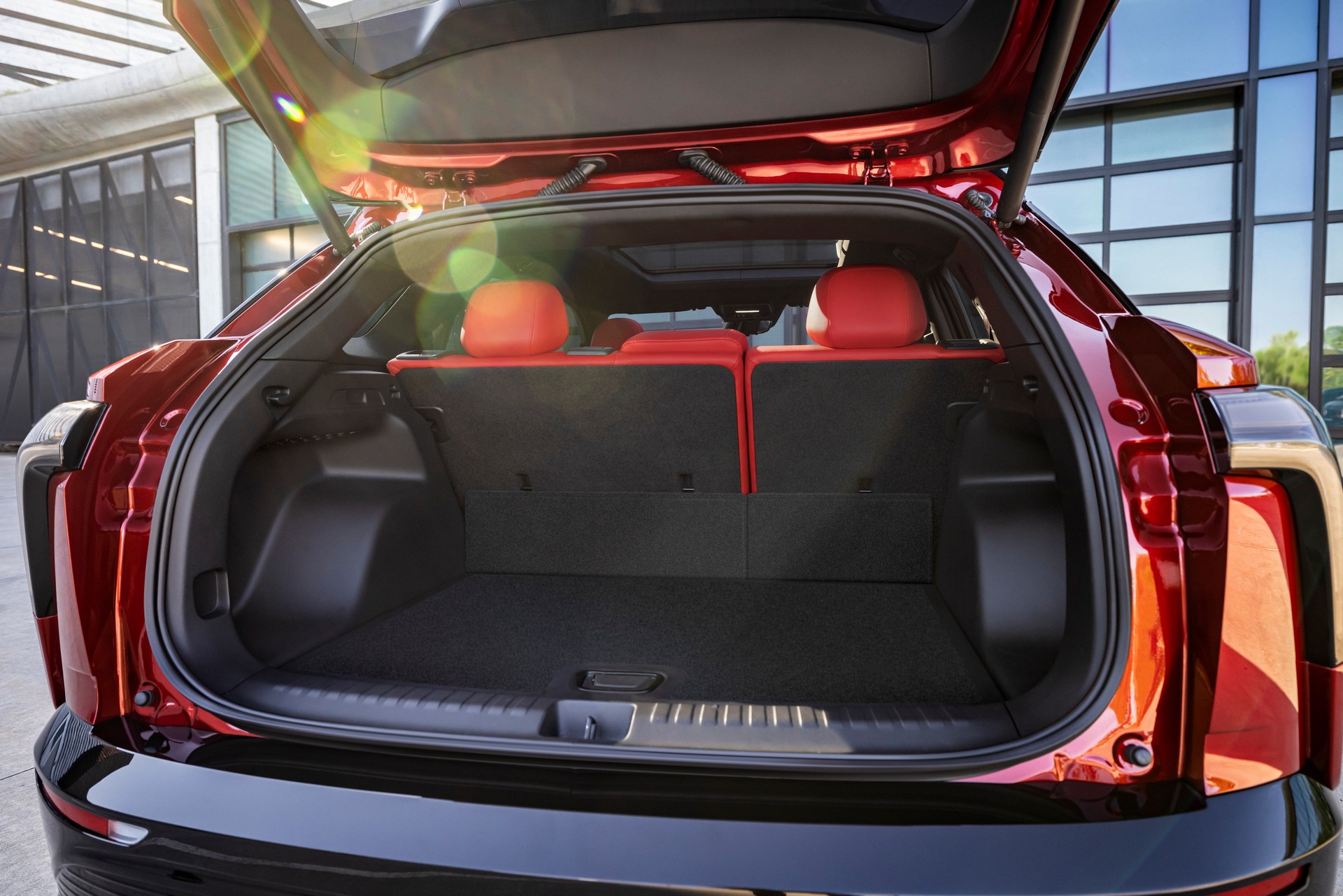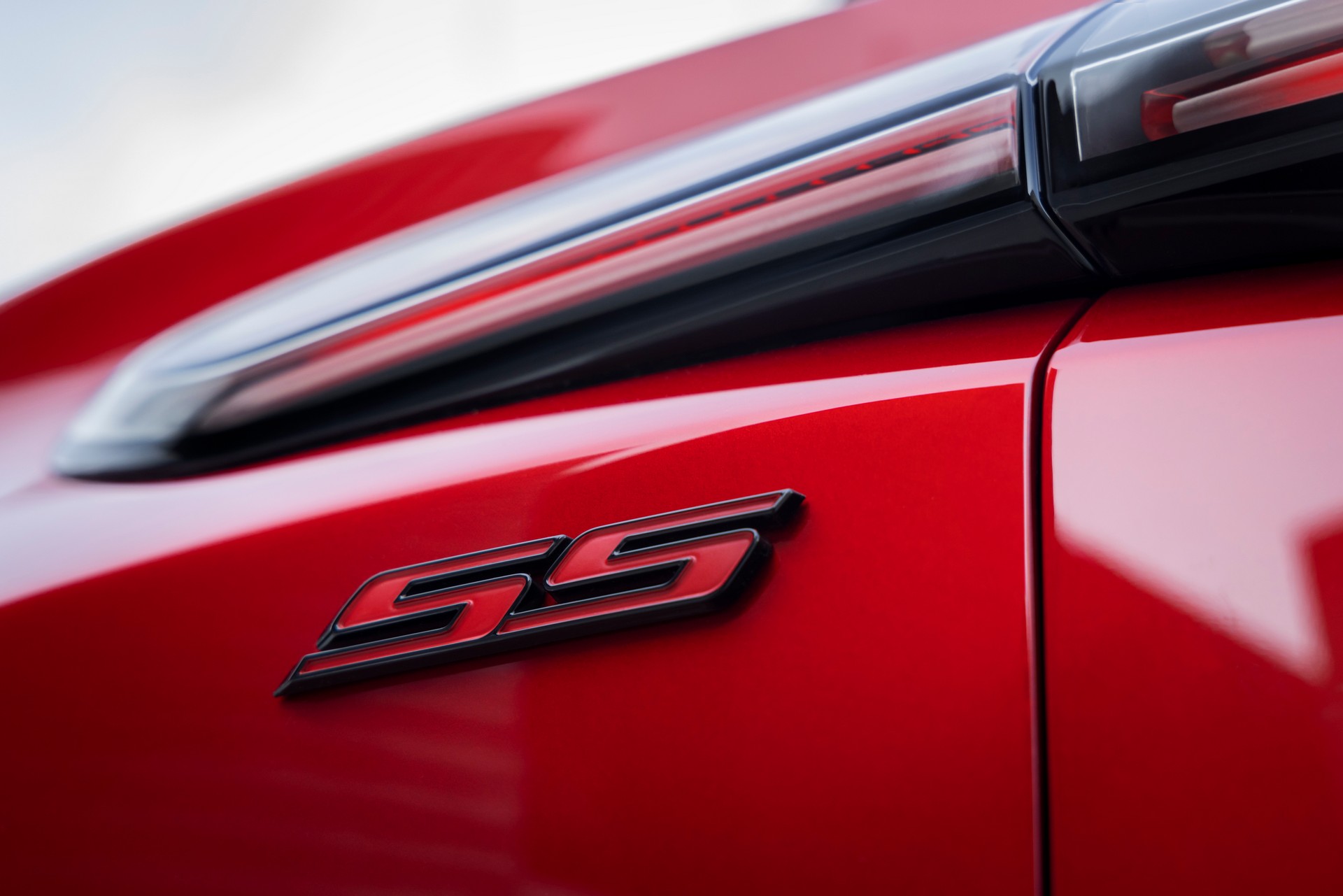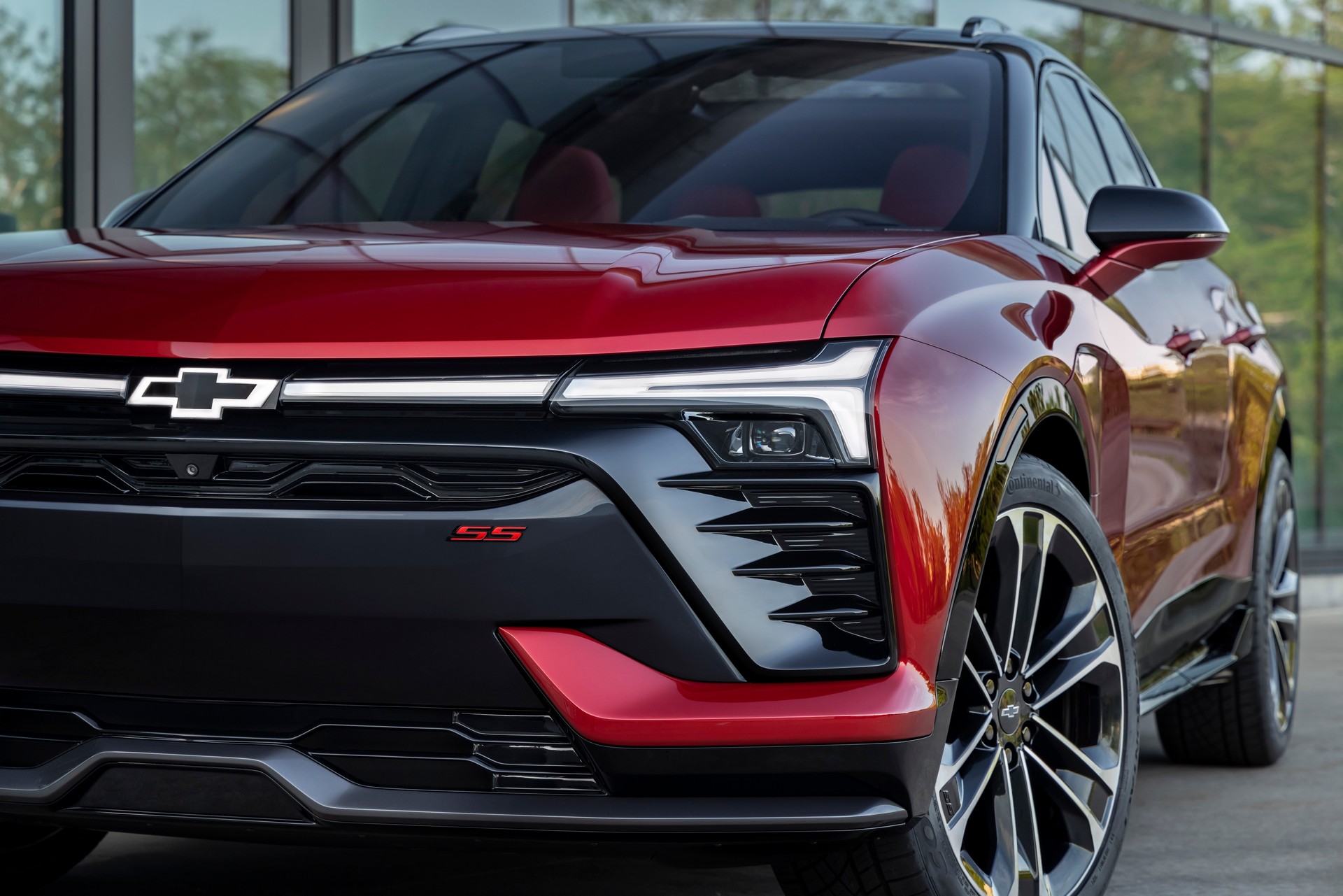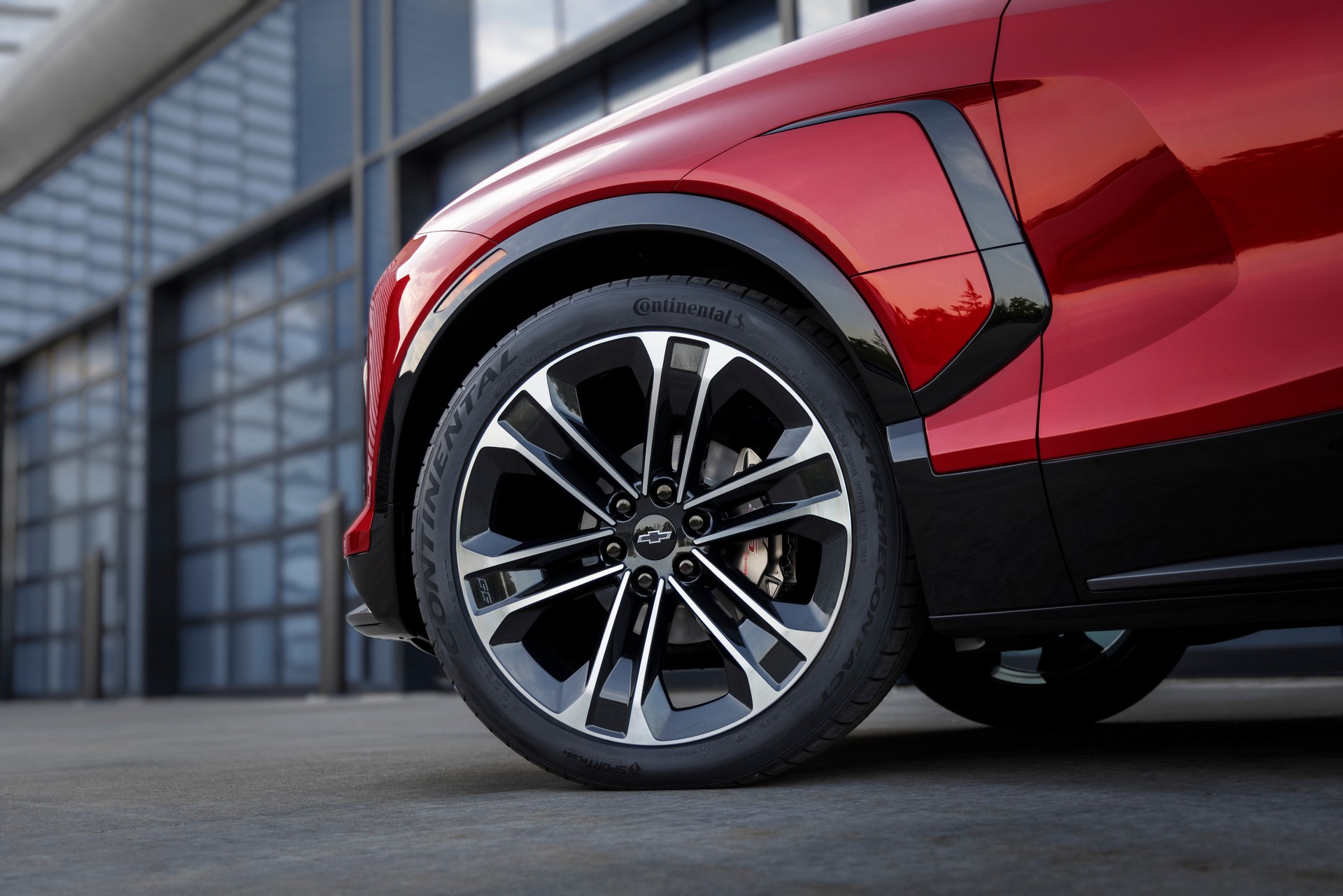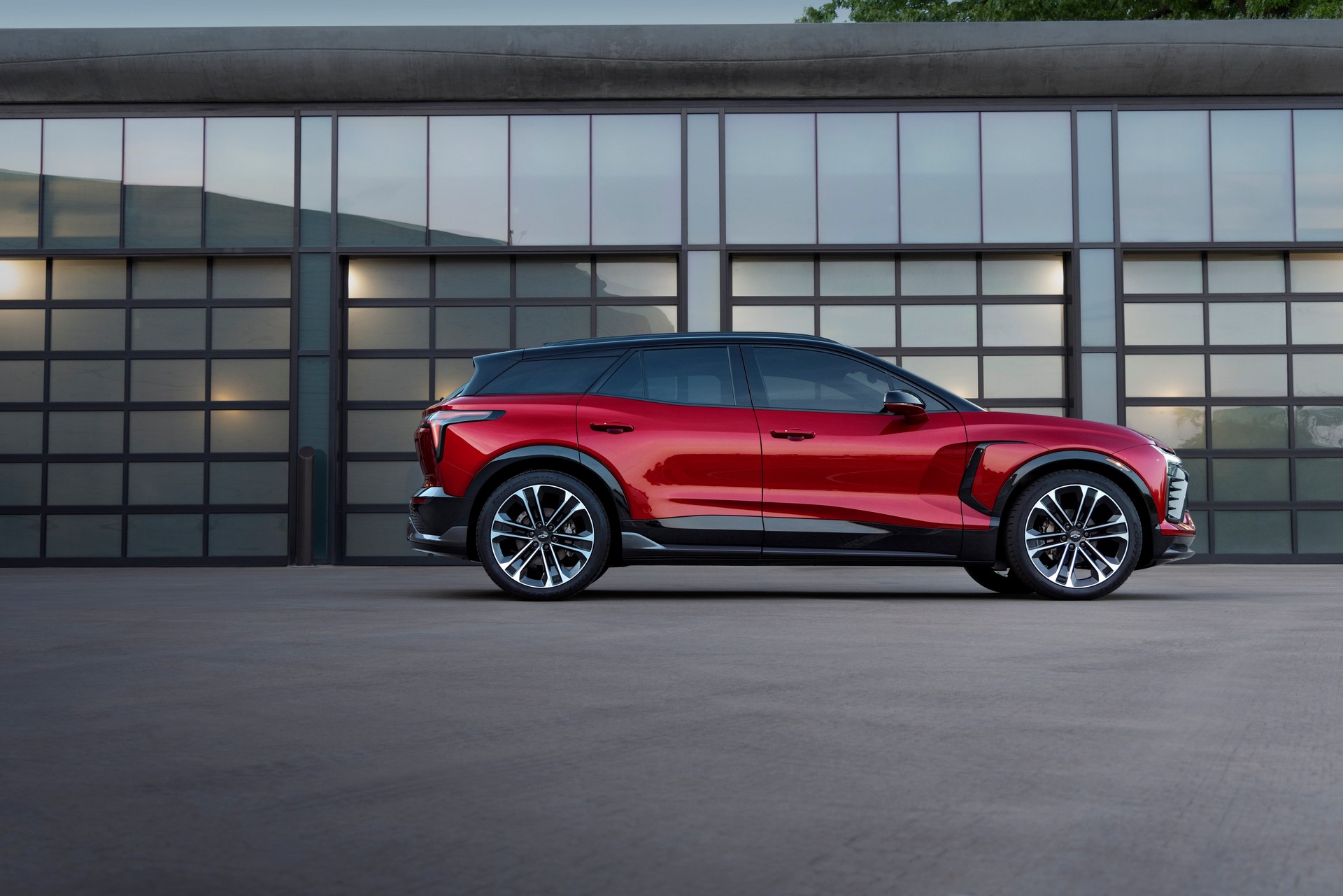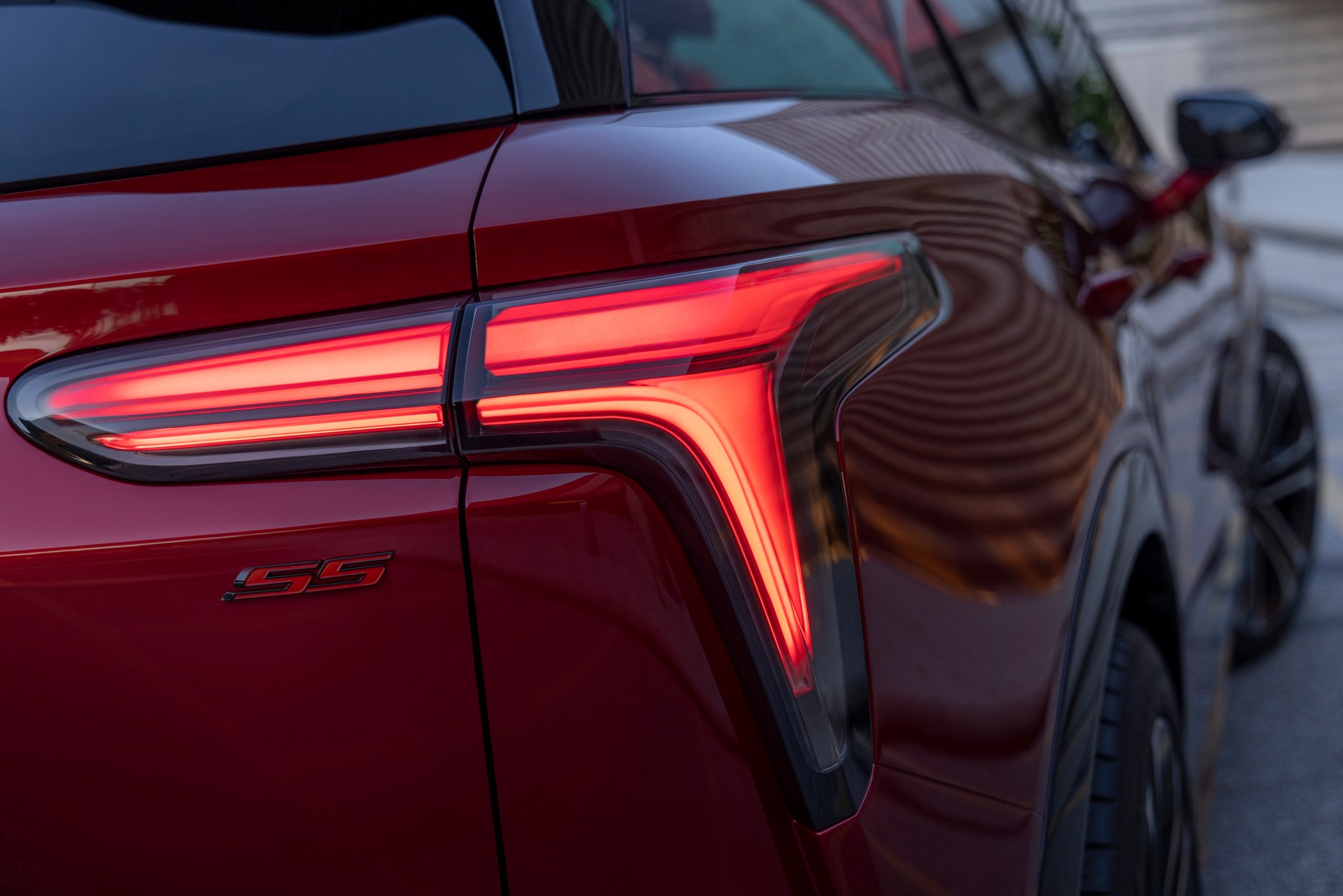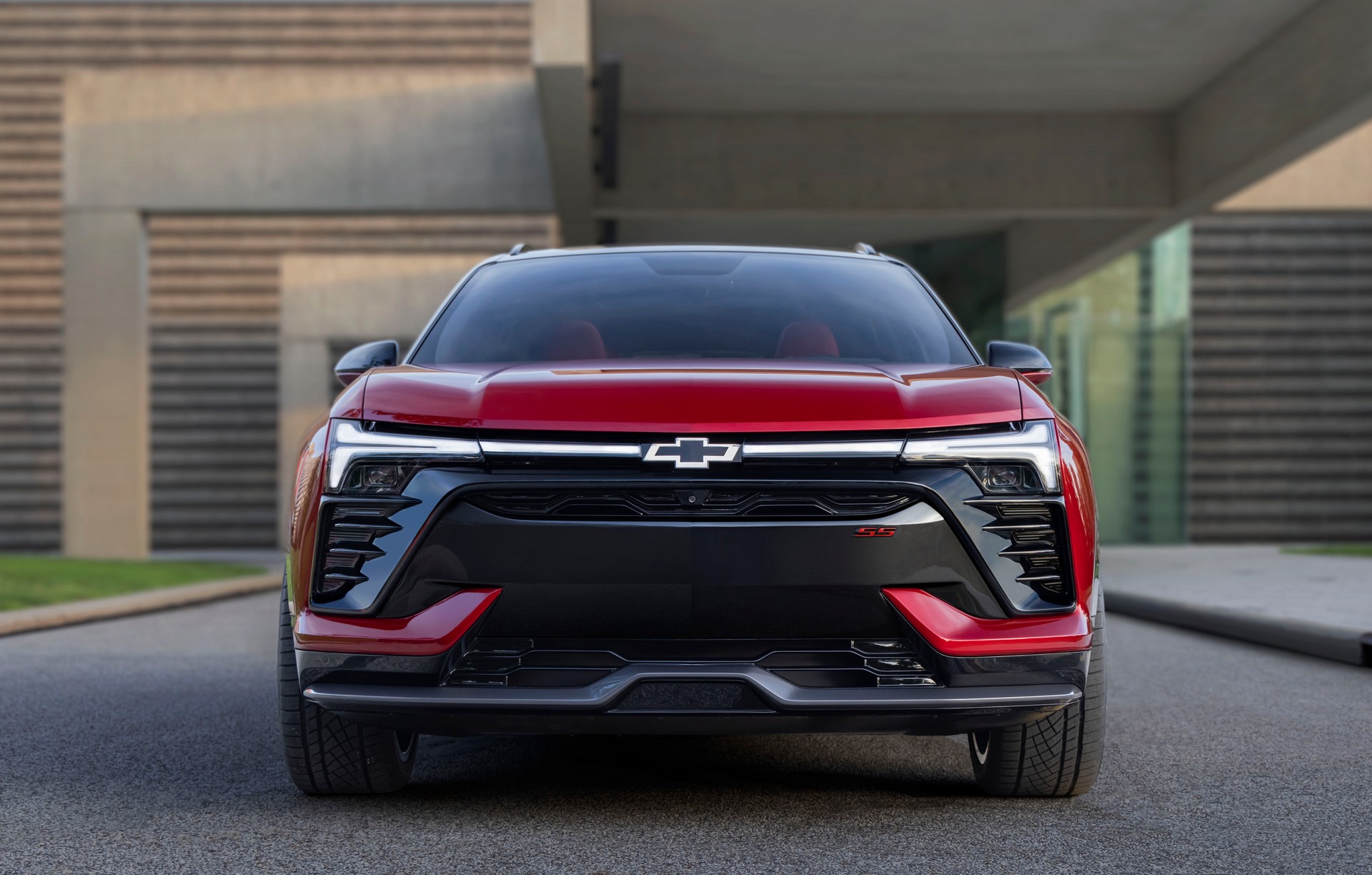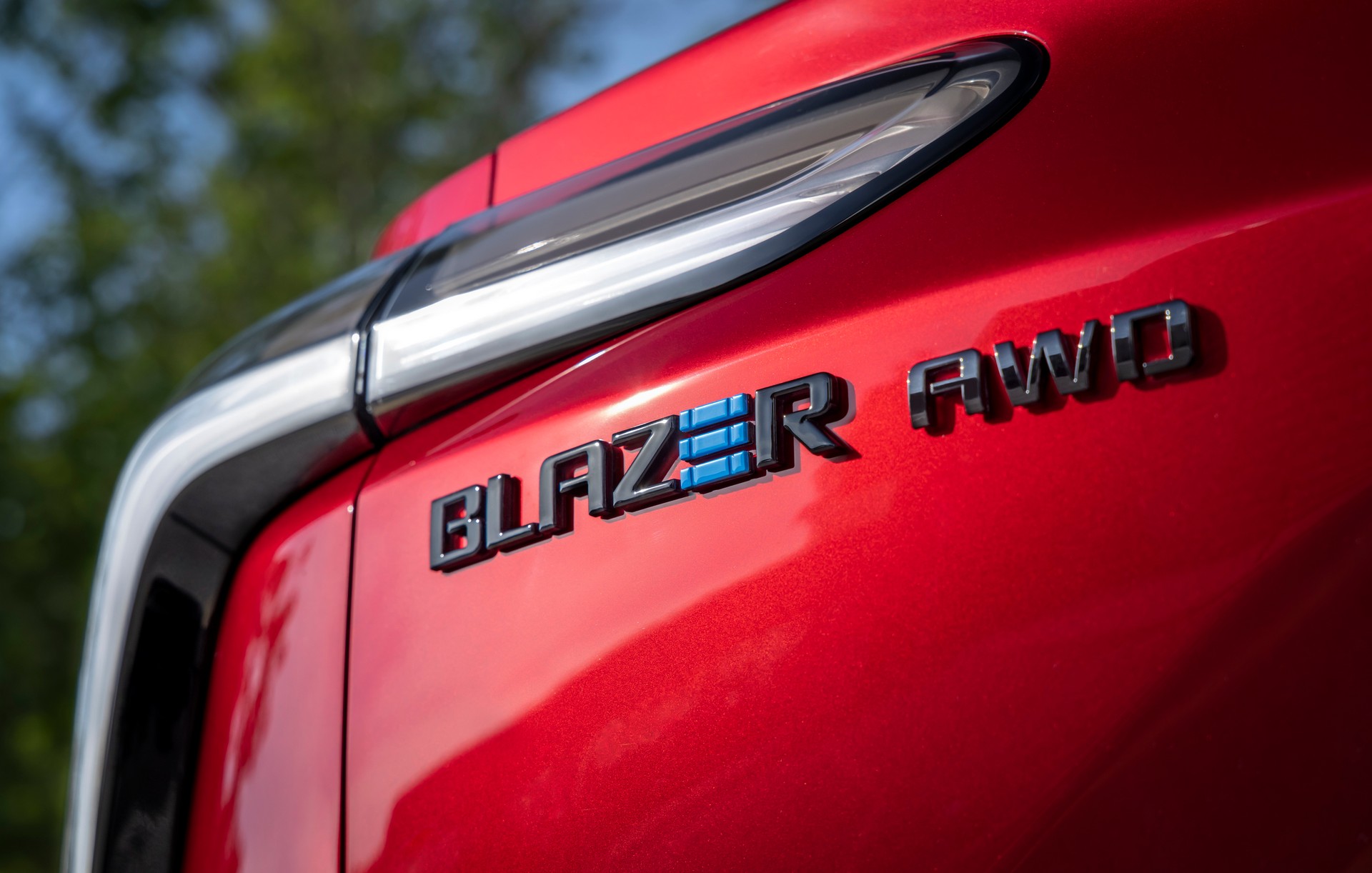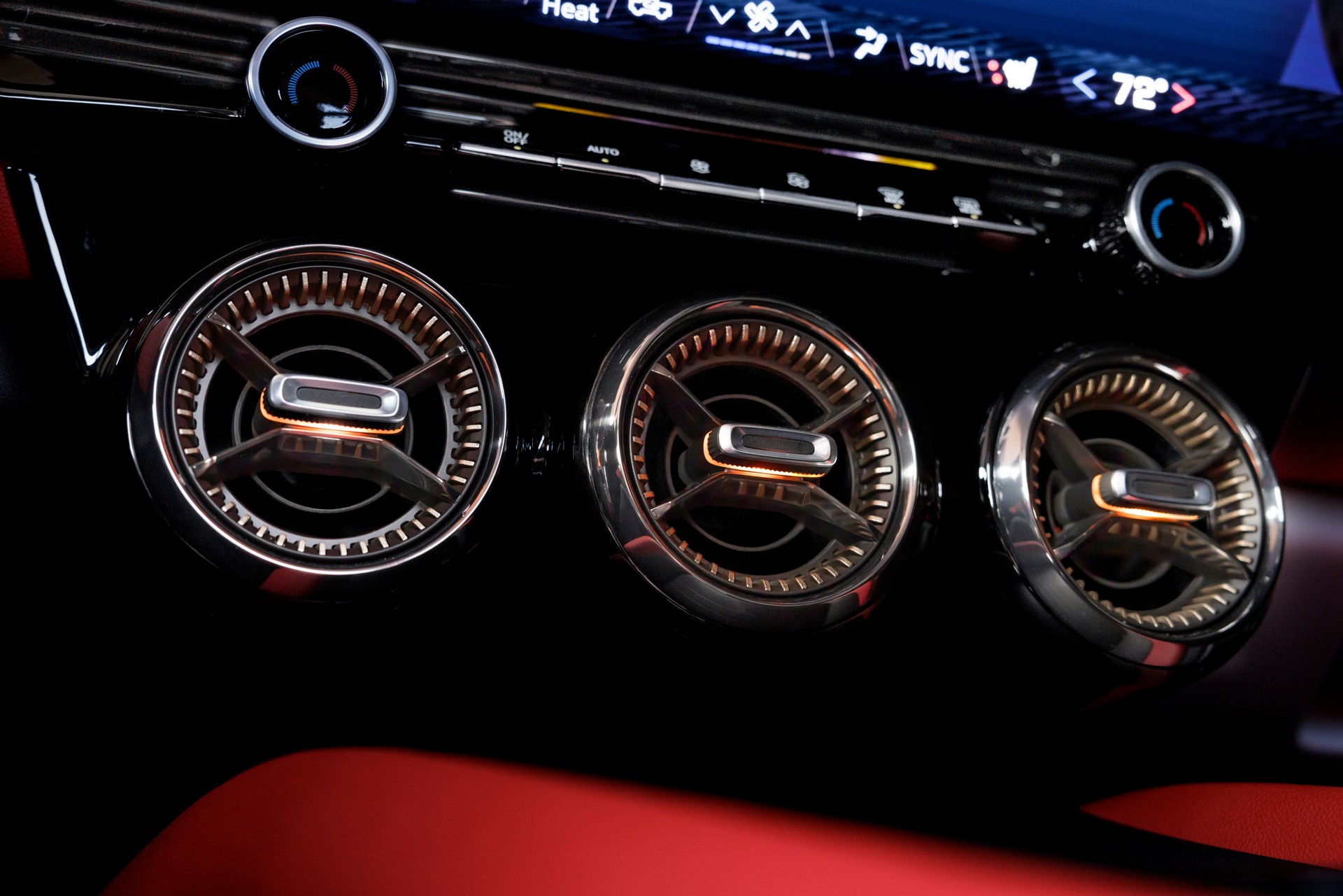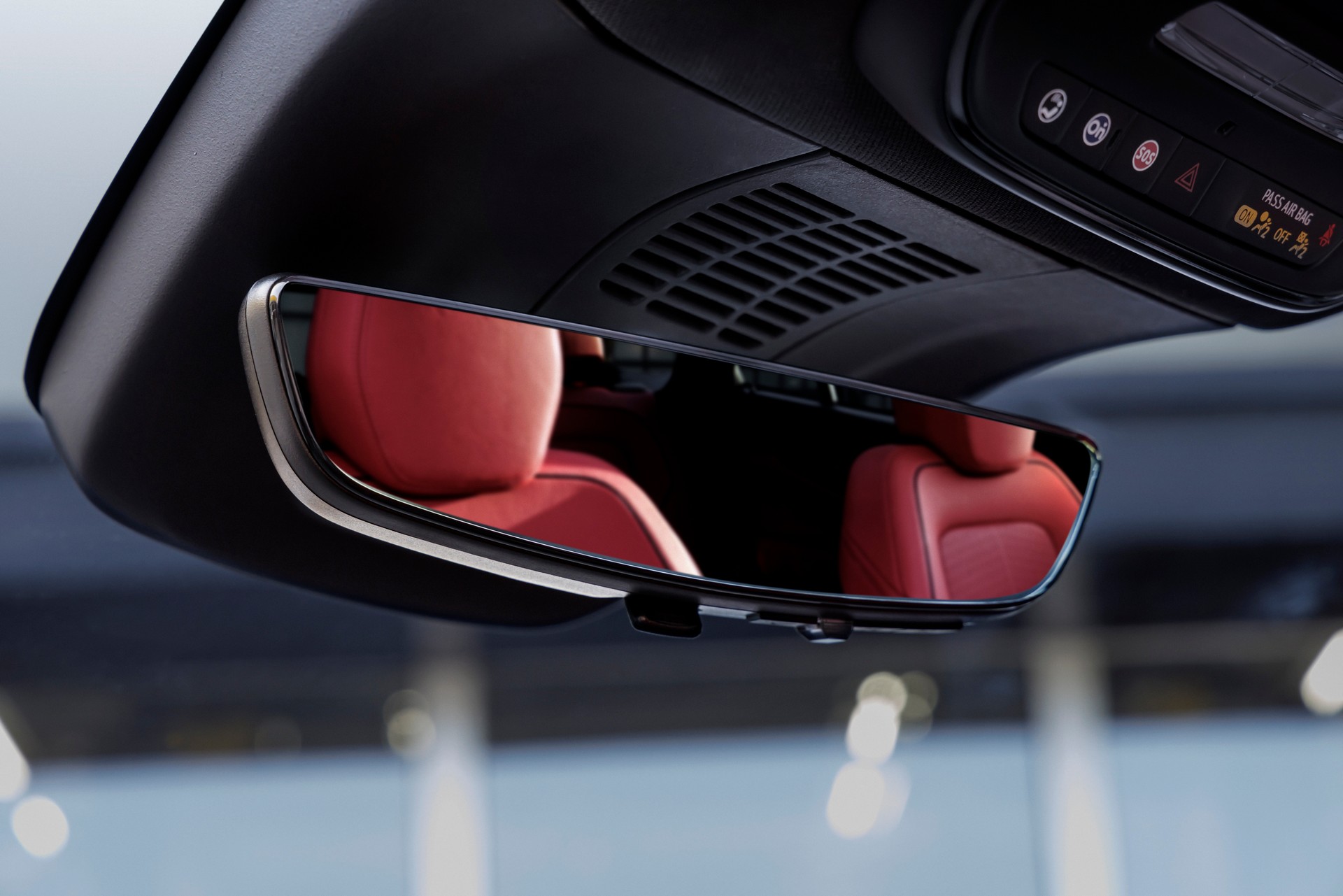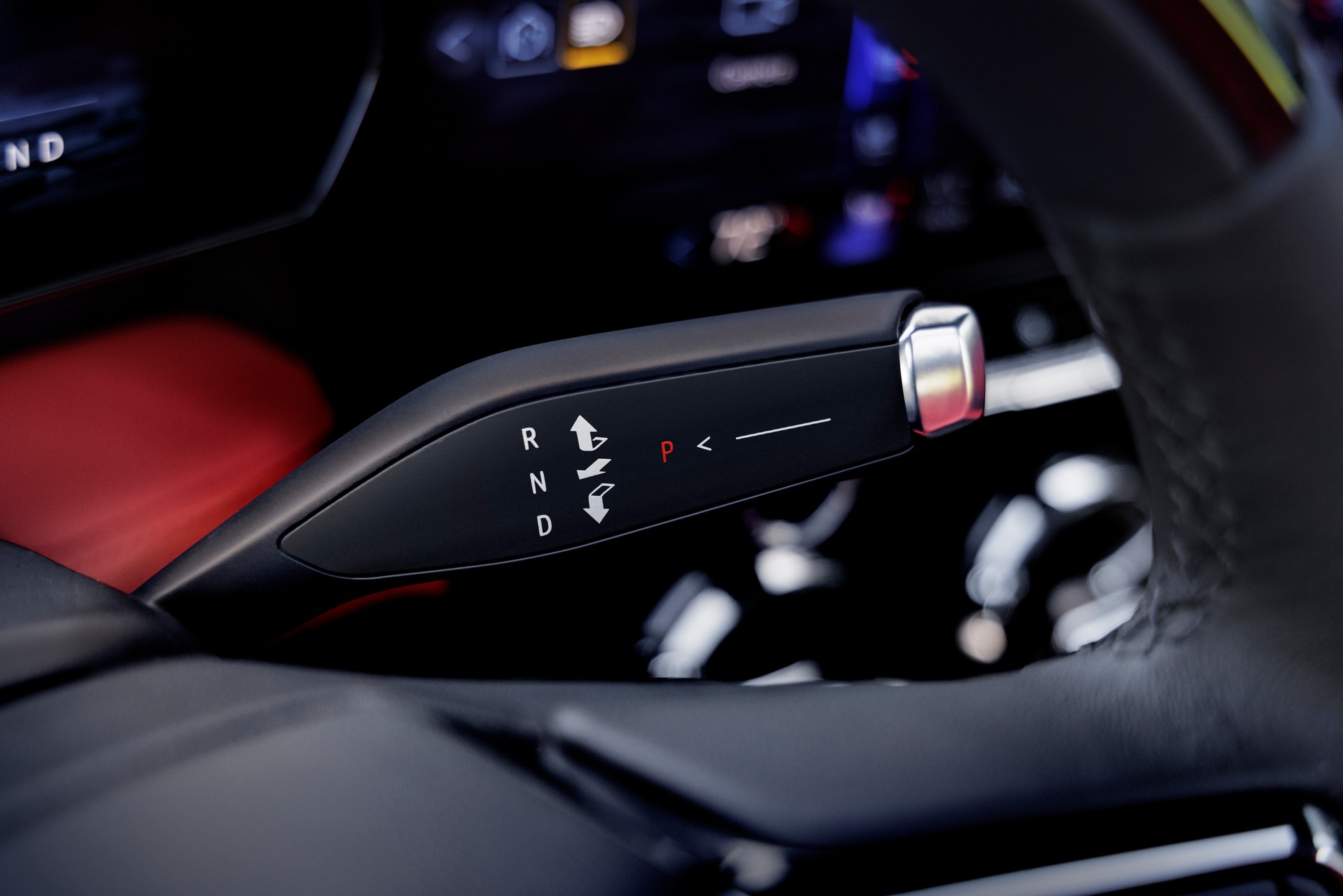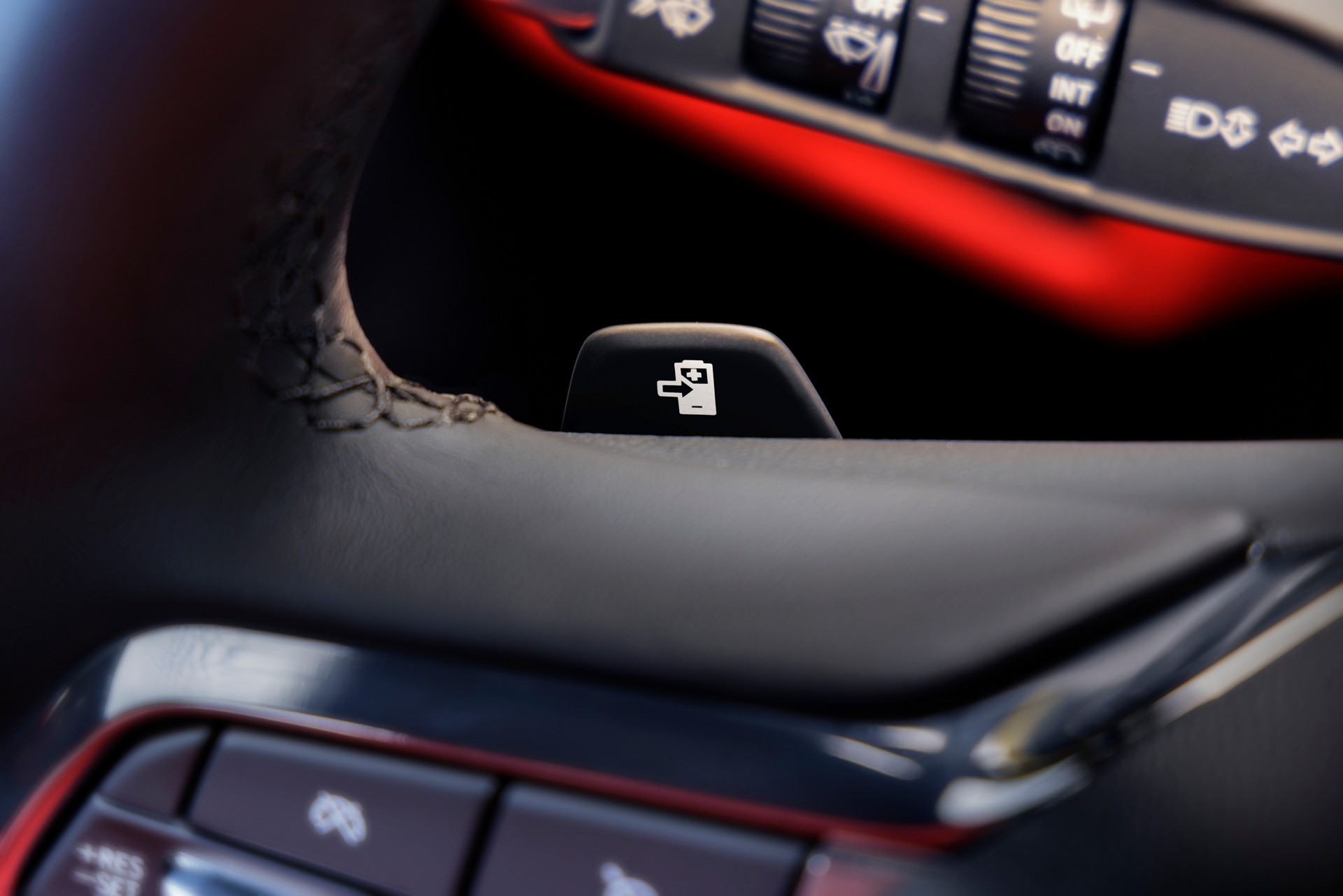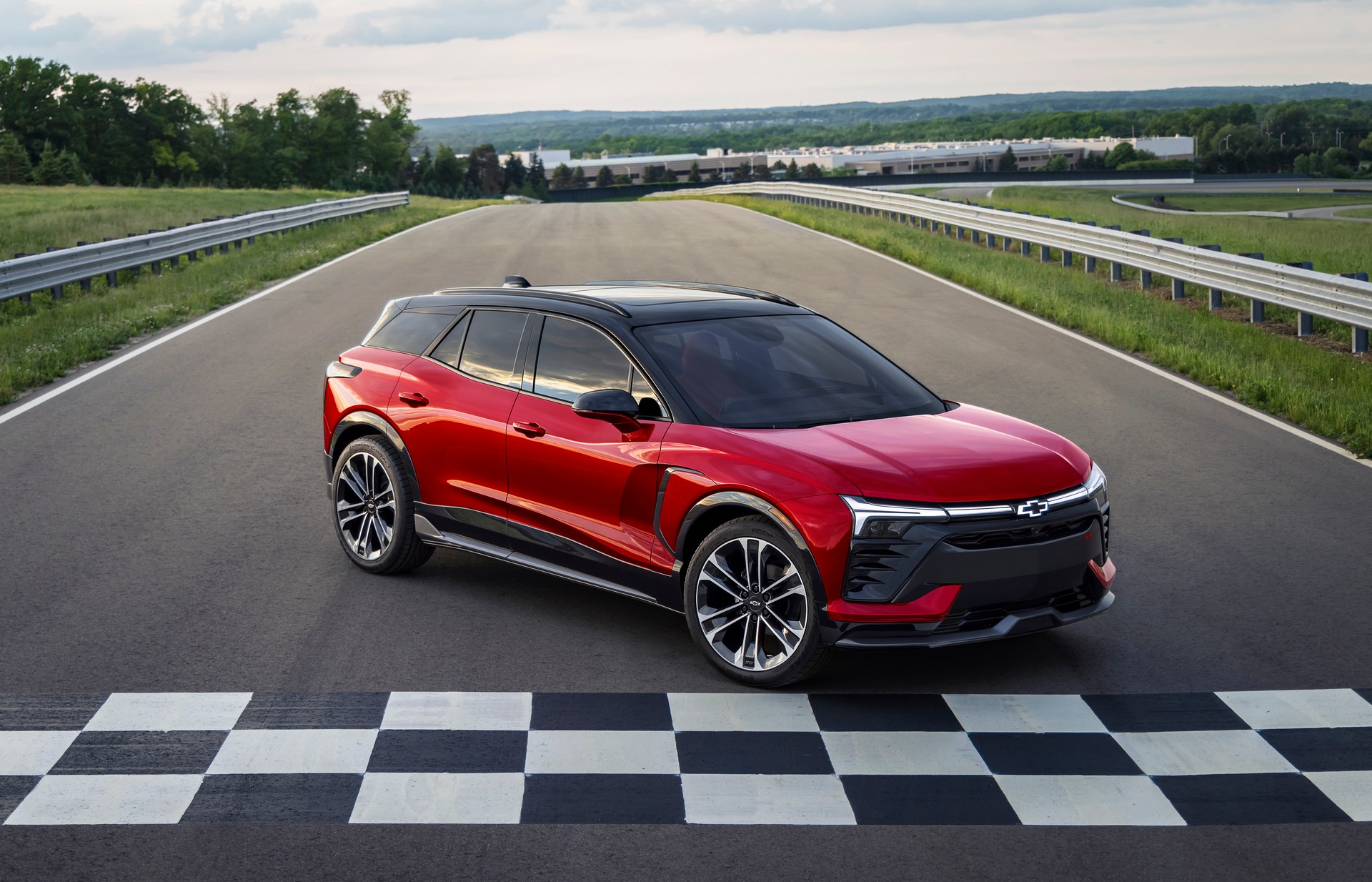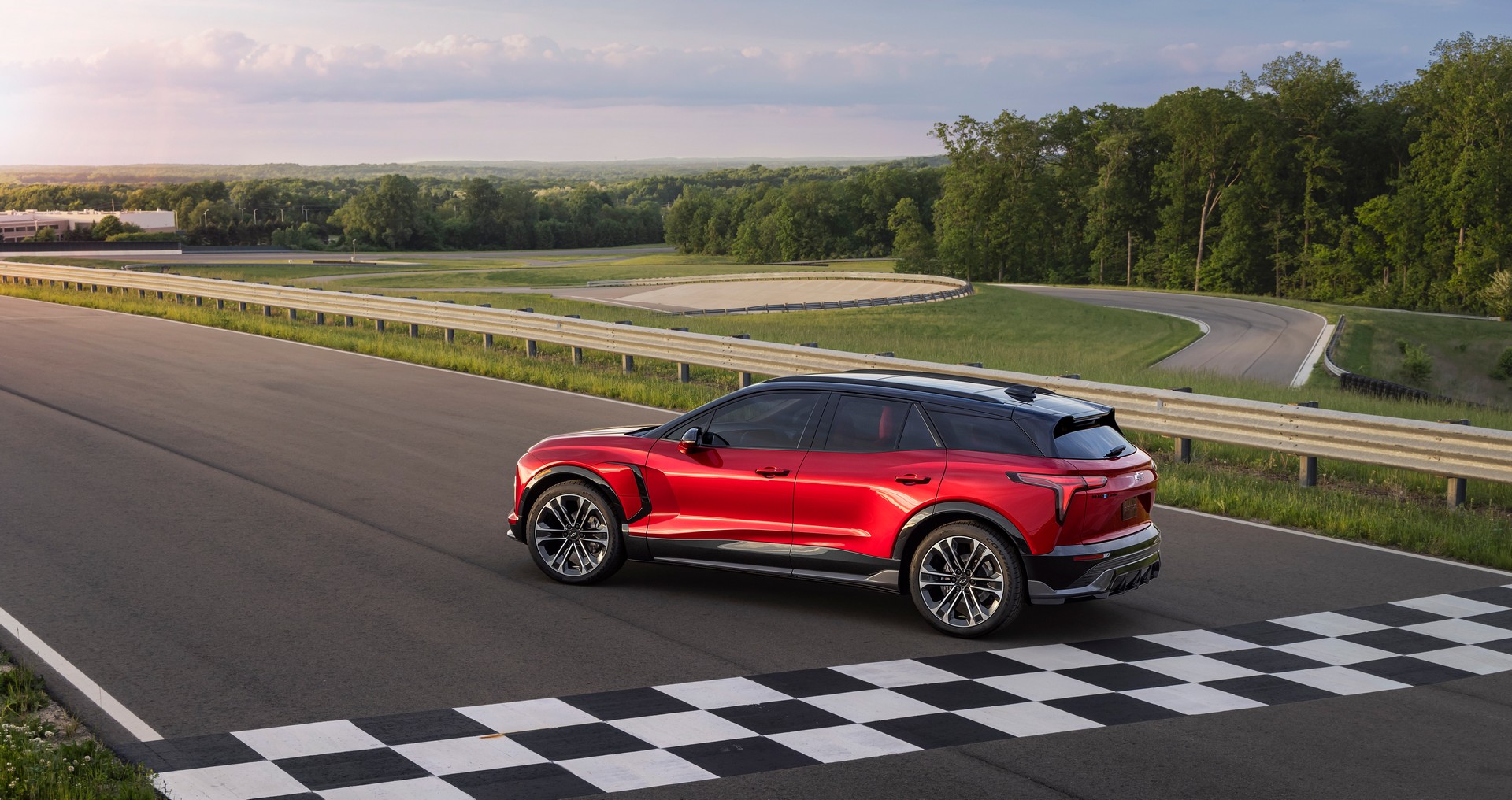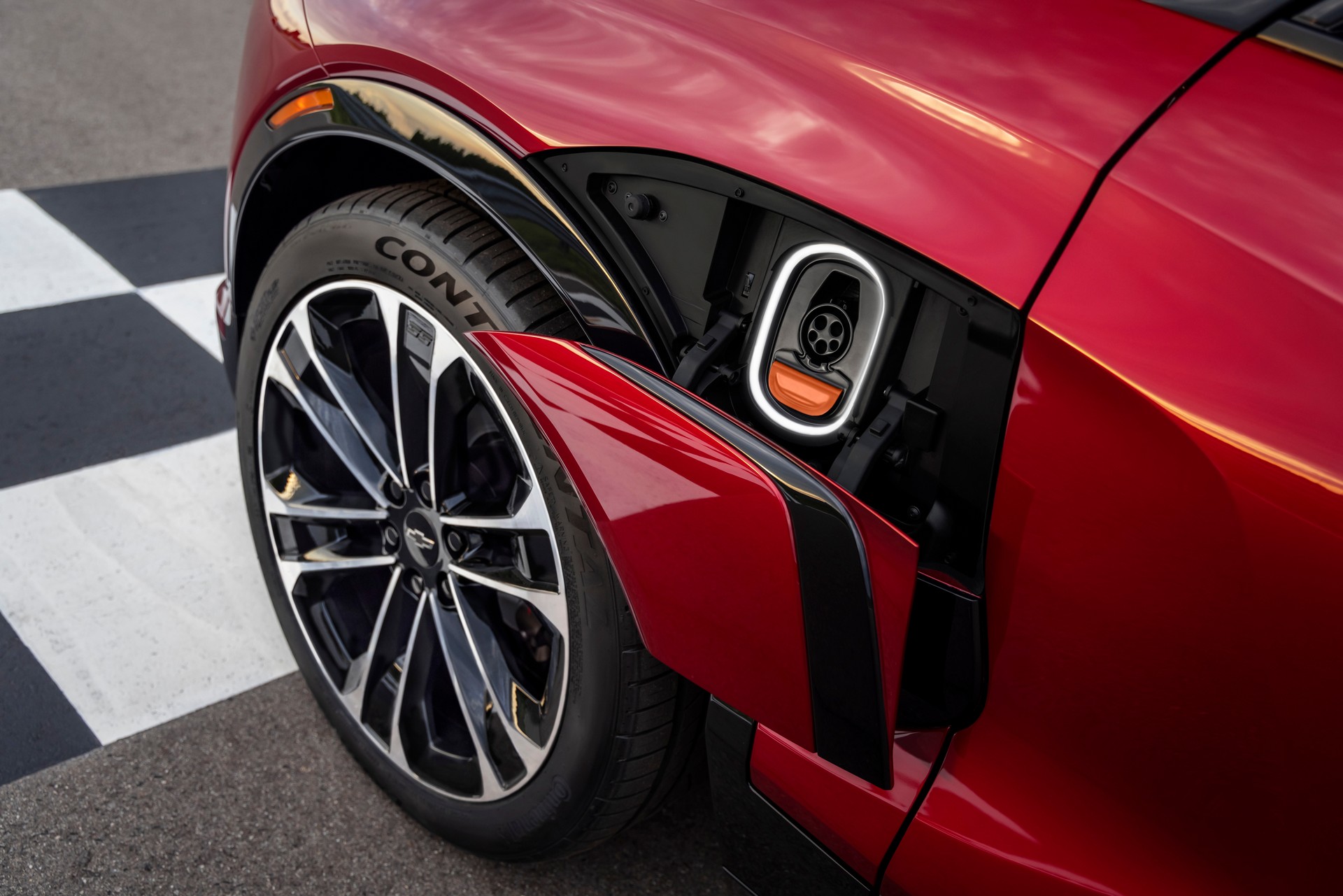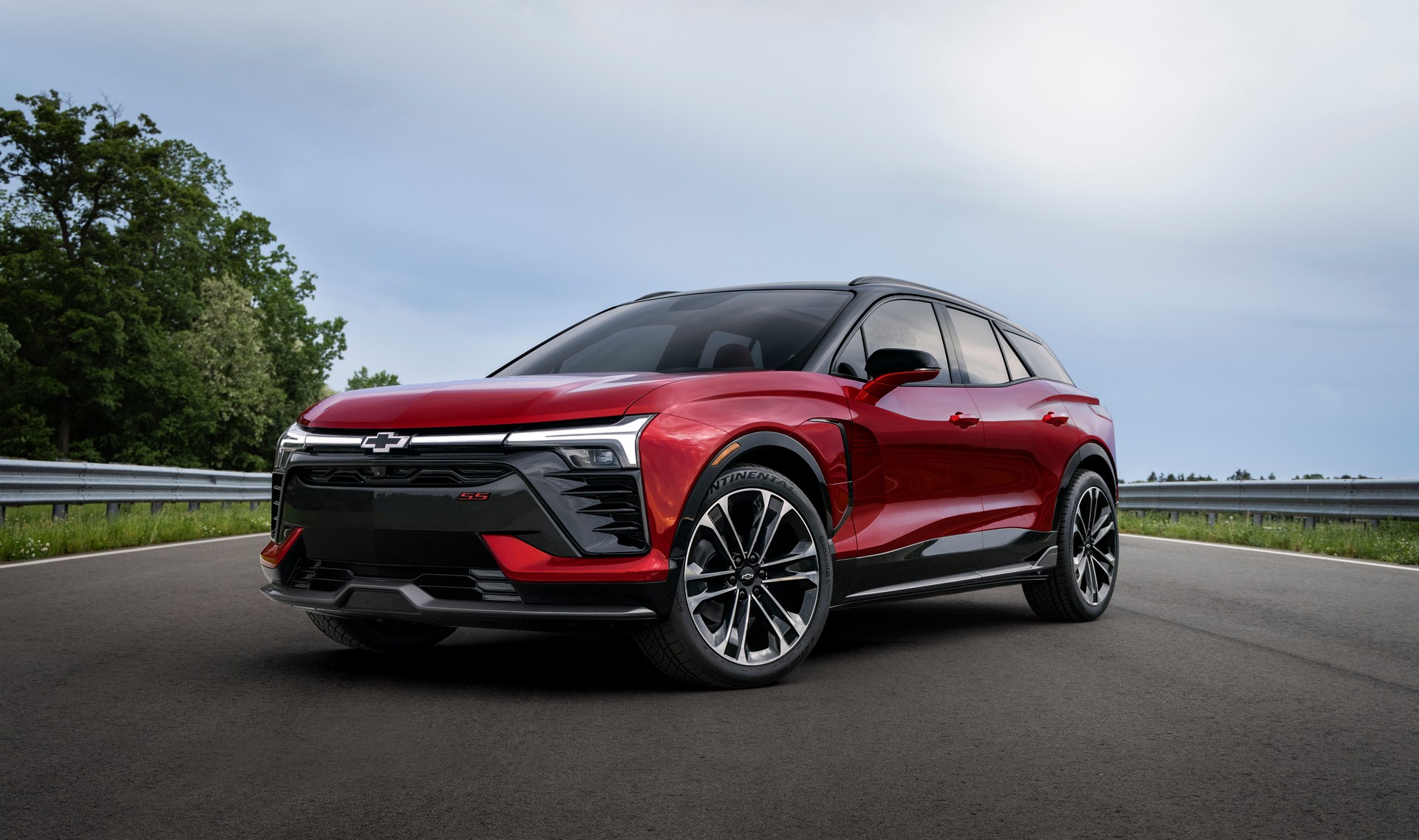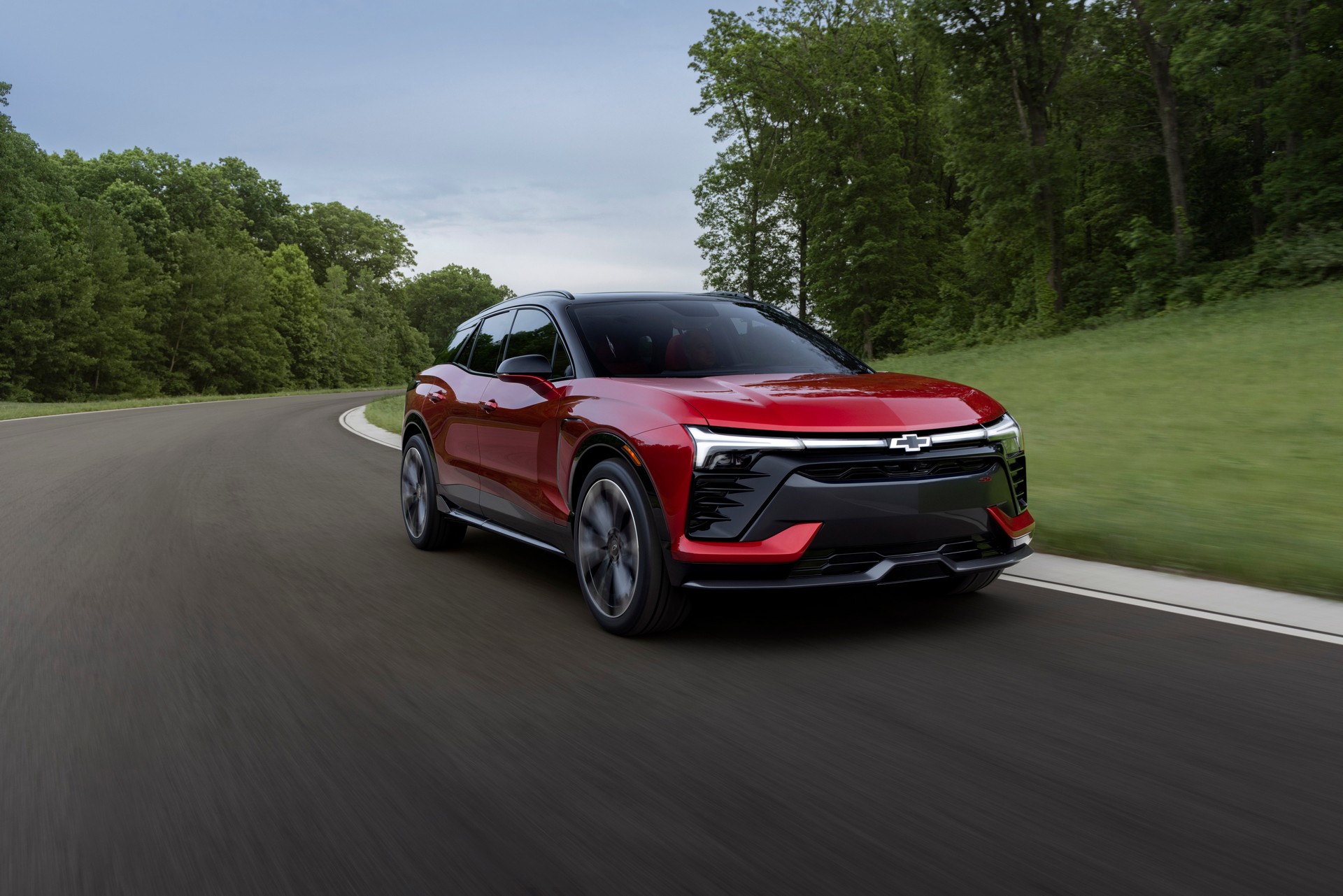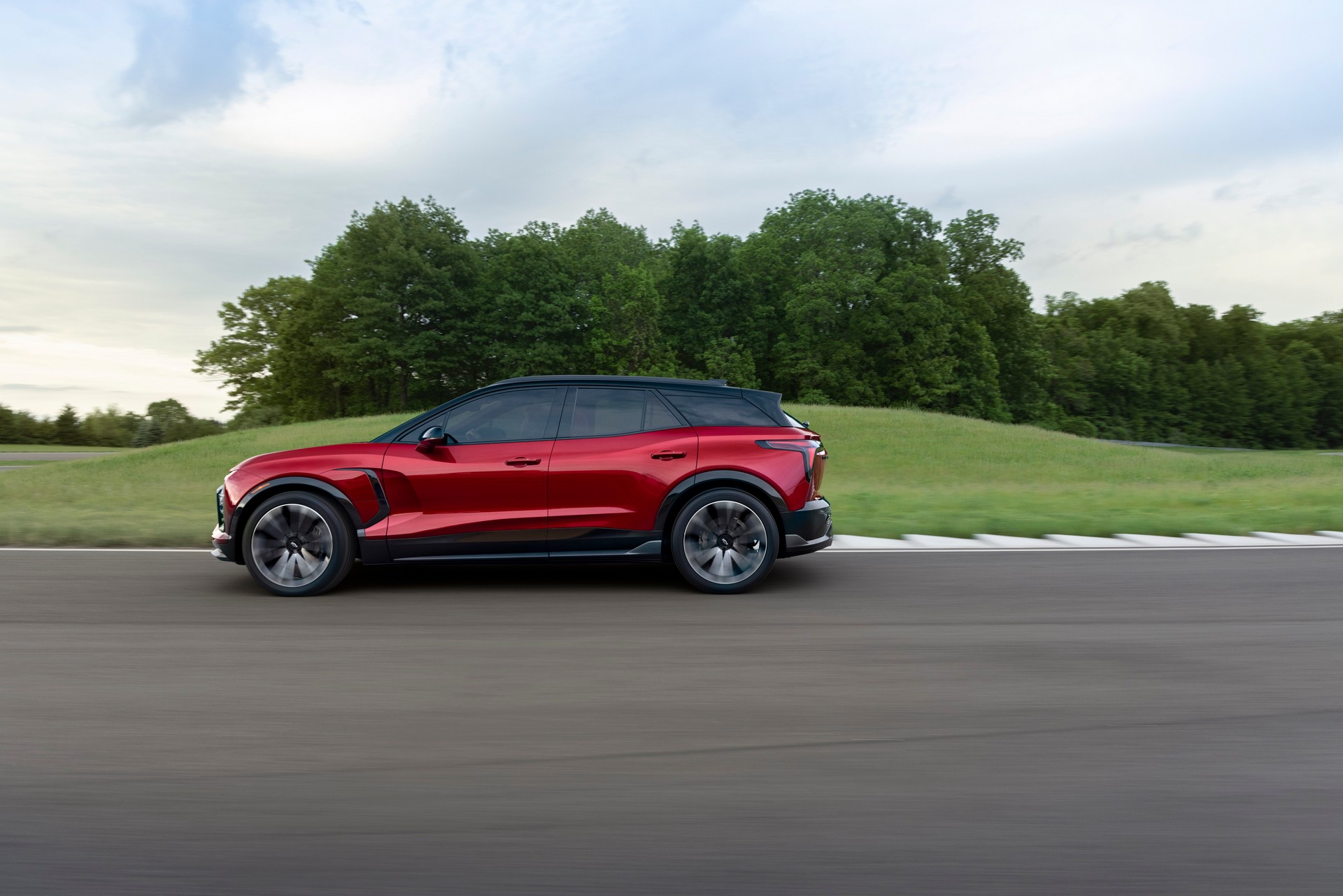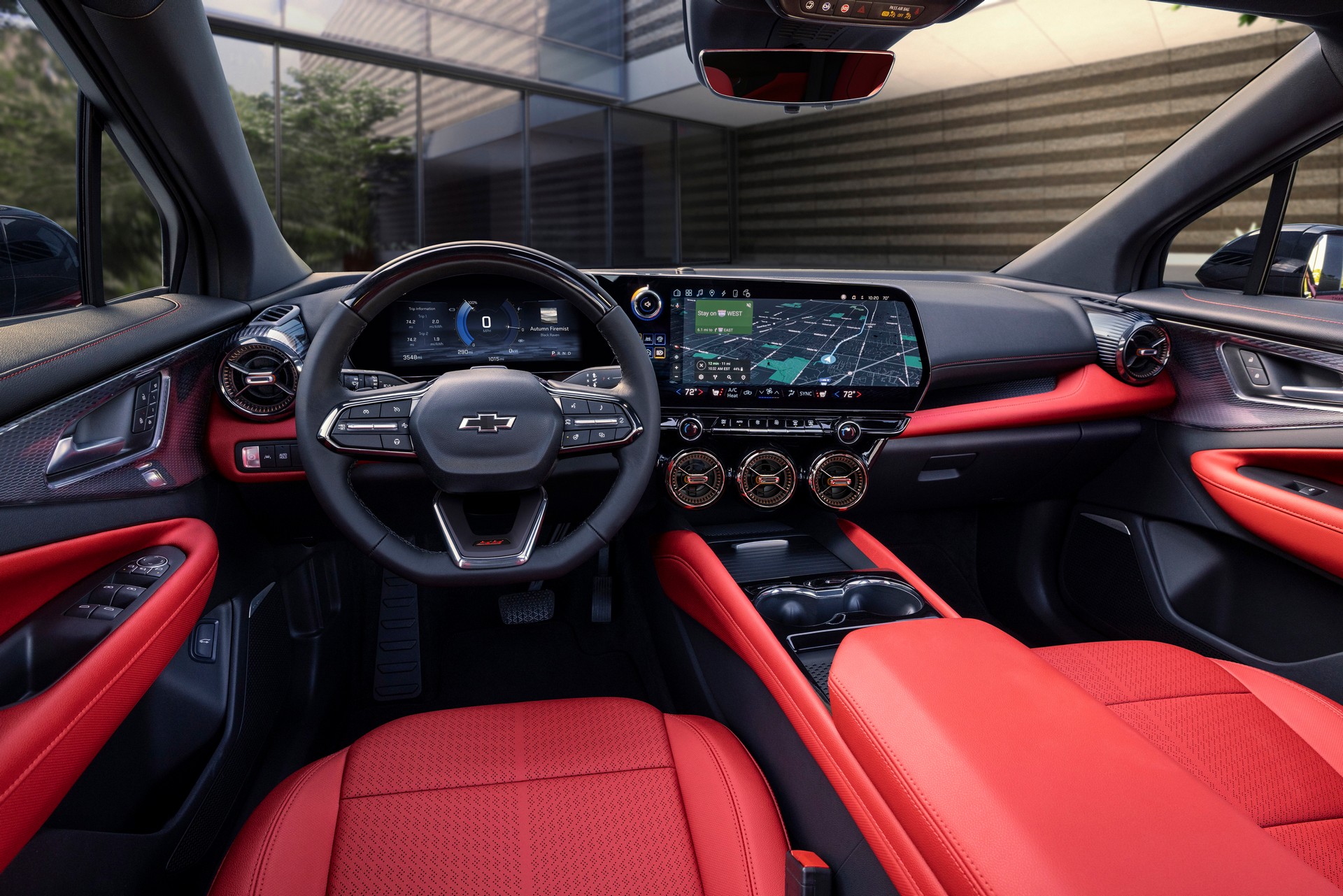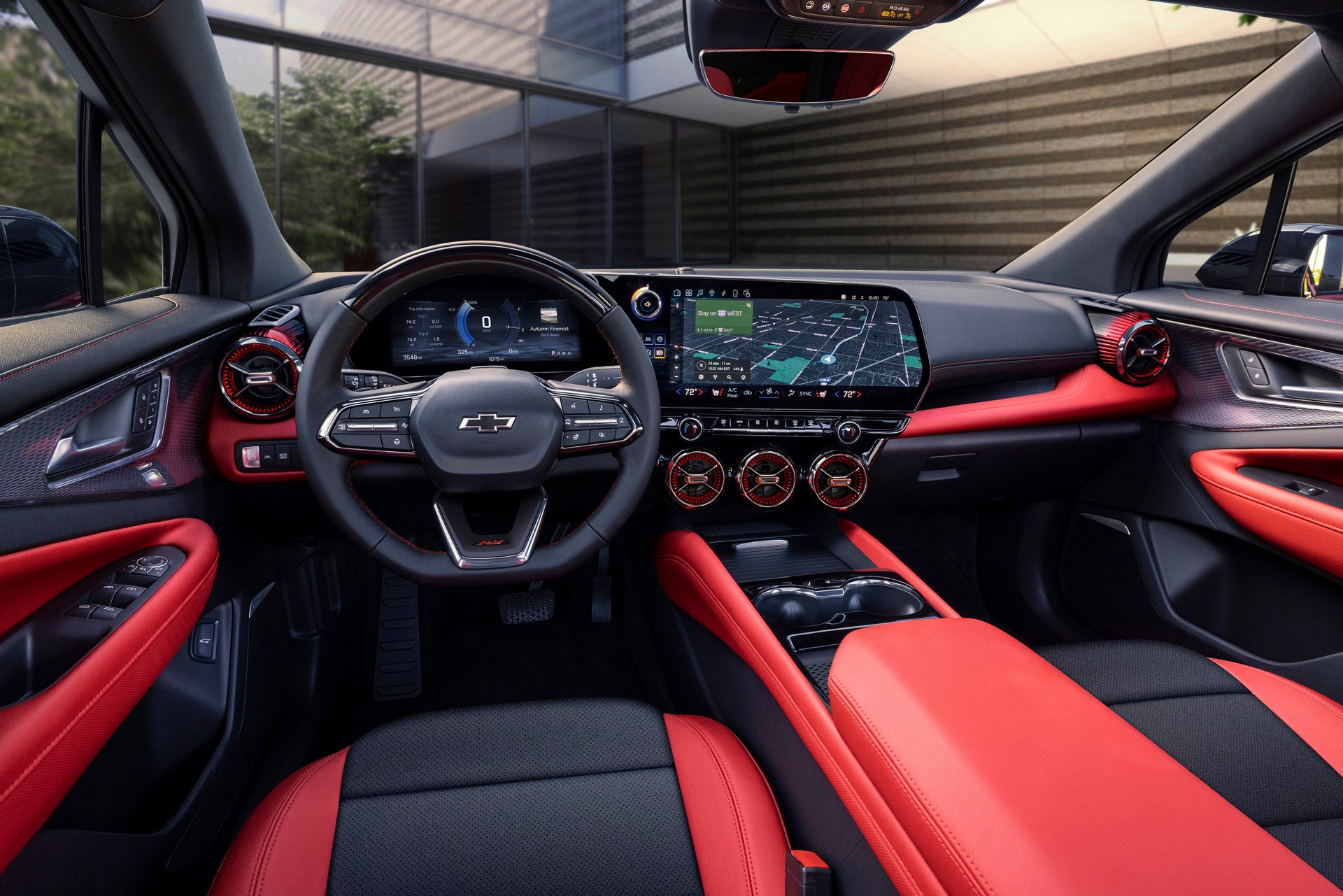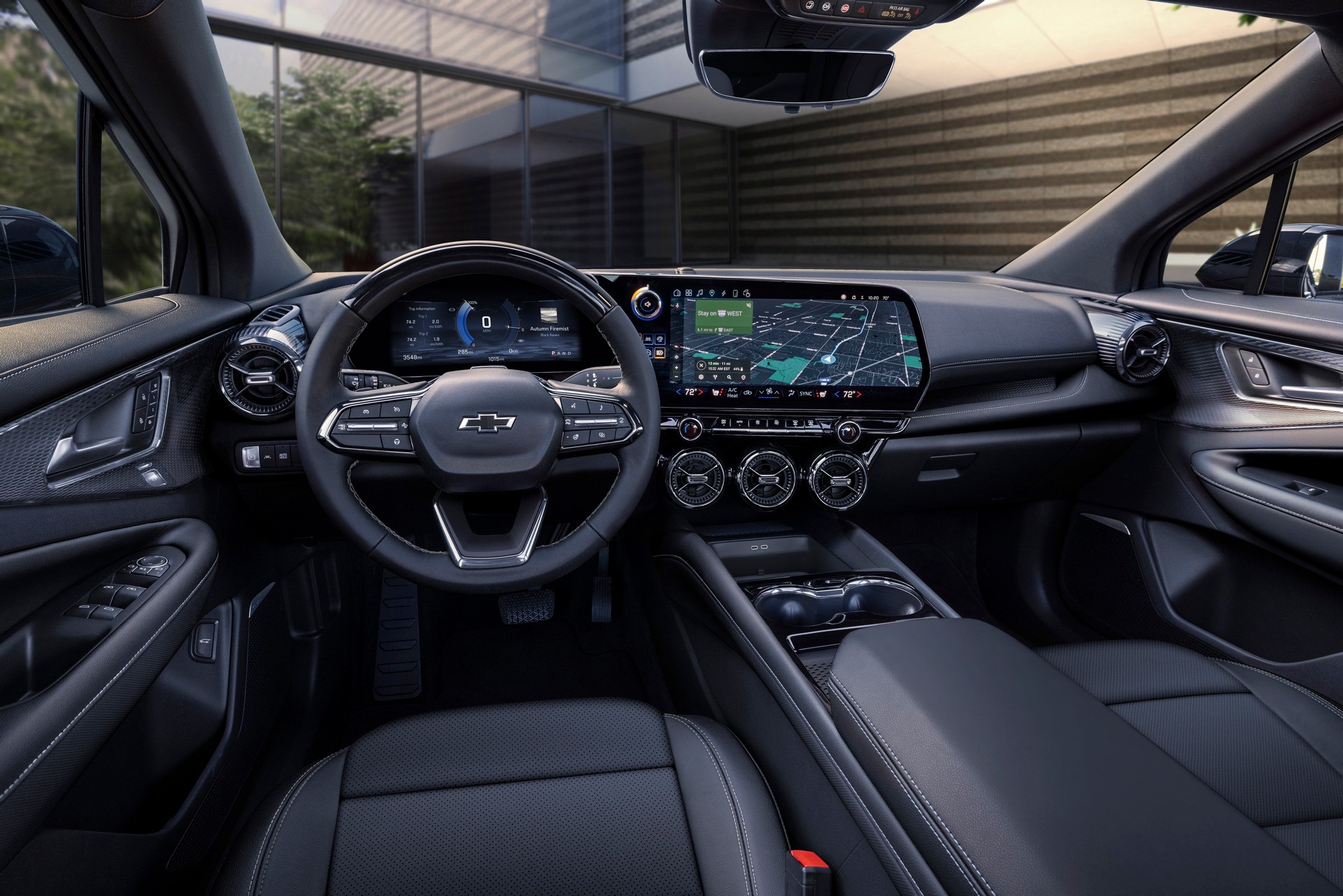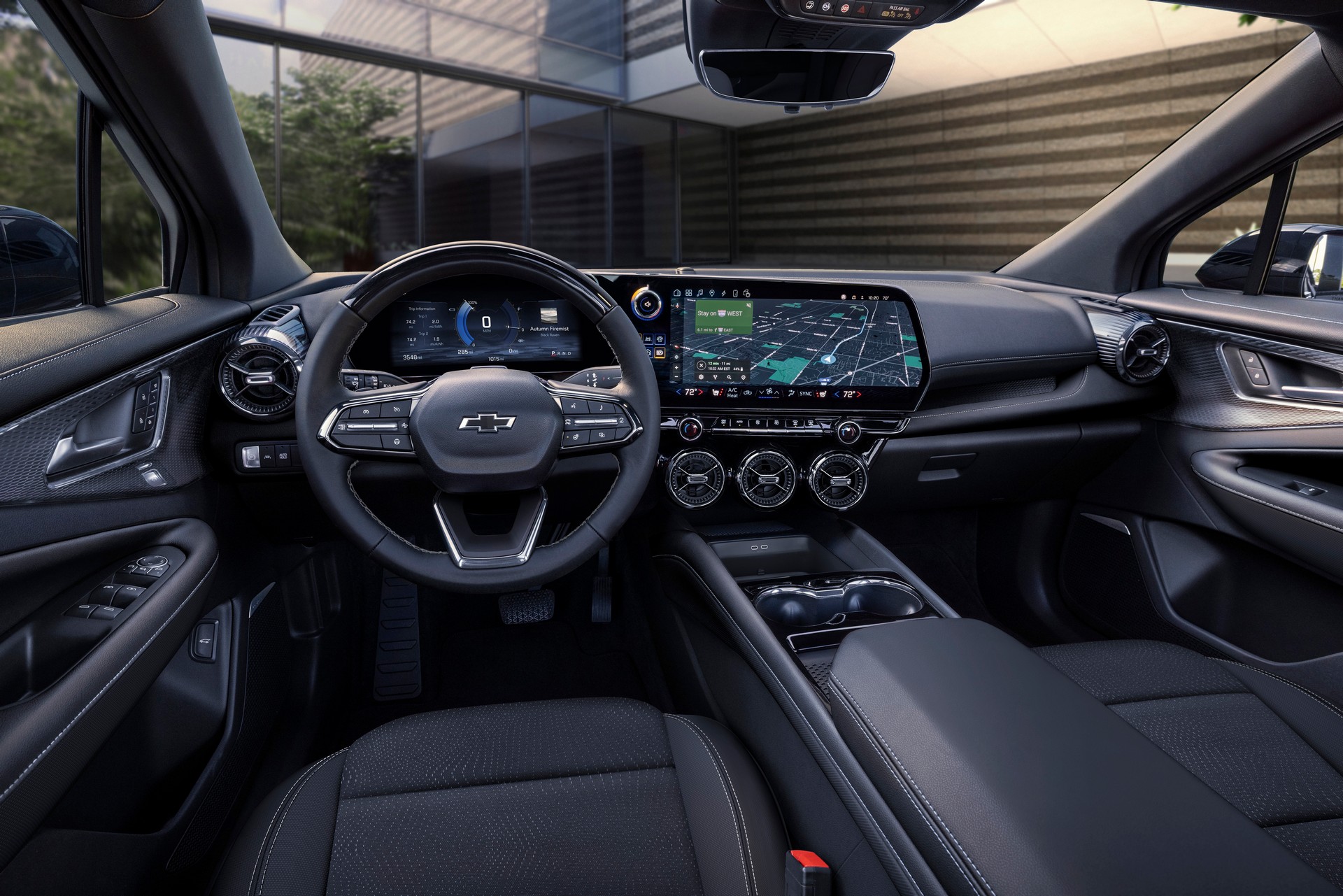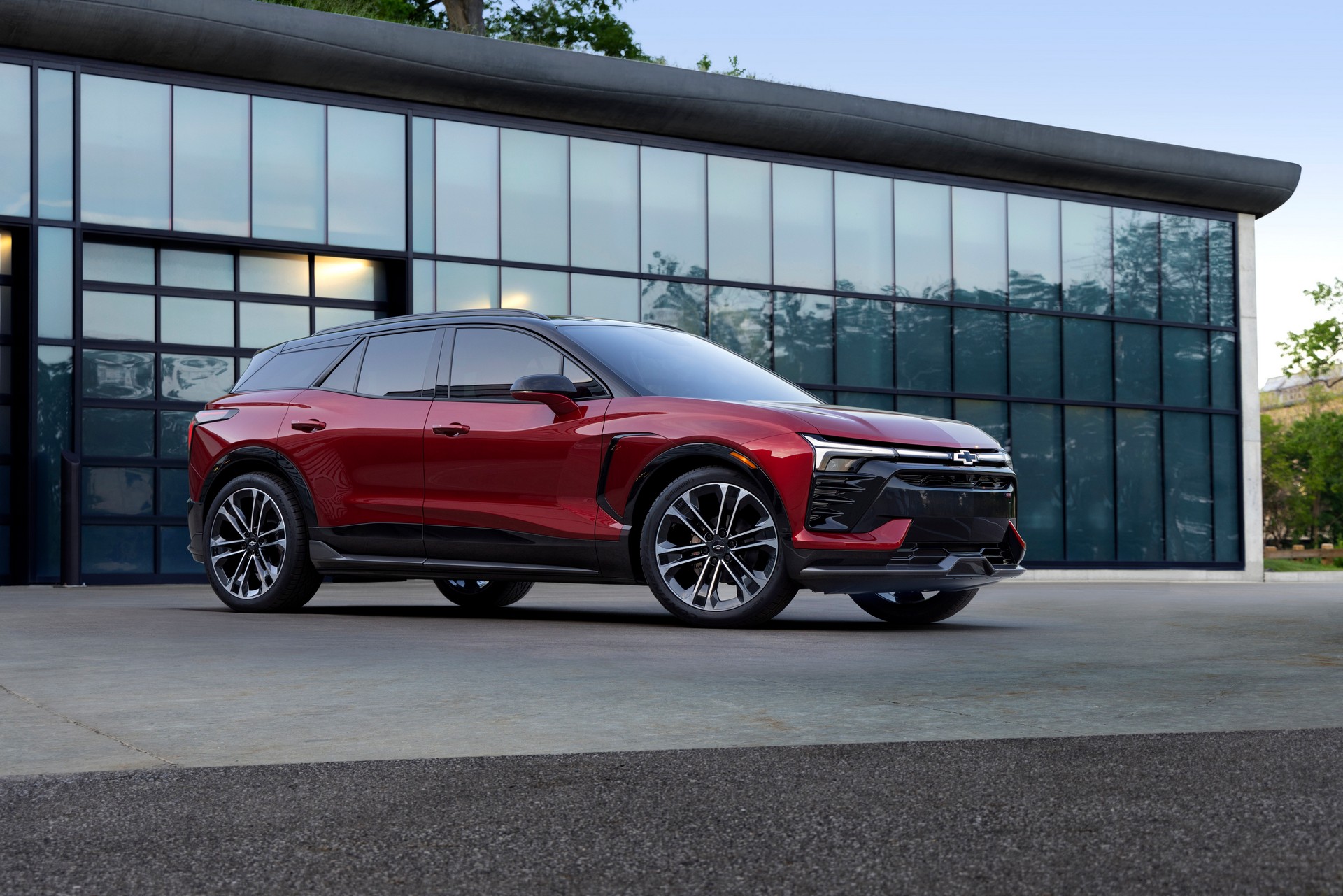GM is formally introducing the new 2024 Chevrolet Blazer to the public at the North American International Auto Show in Detroit this week. We’ve updated this story with live images of the top-spec SS version of the electric crossover. (Updated 9/14/2022).
Chevrolet hasn’t offered a high-performance SUV since the days of the Trailblazer SS, which was introduced nearly two decades ago with a 6.0-liter V8 pumping out 395 hp (295 kW / 400 PS) and 400 lb-ft (542 Nm) of torque. It enabled the model to accelerate from 0-60 mph (0-96 km/h) in as little as 5.4 seconds, before hitting a limited top speed of 130 mph (209 km/h).
Those numbers are still pretty respectable today, but the world has moved on from the era of massive V8 engines. However, there’s no reason to pout and that’s made abundantly clear by the 2024 Chevrolet Blazer EV SS.
Set to become the first electric SS variant, the model features a dual-motor powertrain that produces up to 557 hp (415 kW / 565 PS) and 648 lb-ft (878 Nm) of torque. That’s enough to embarrass the $85,400 BMW X5 M50i and this is before factoring in the Wide Open Watts (WOW) mode, which enables the crossover to rocket from 0-60 mph (0-96 km/h) in less than four seconds.
A Stylish Electric Crossover
Now that we’ve gotten your attention, let’s take a closer look at Chevrolet’s latest electric vehicle. While the exterior design was previewed last month, we recently got a chance to see the model up close at a media event near the Warren Tech Center. There was little doubt the vehicle would be a head-turner, but the Blazer EV looks even better in the flesh and that’s especially true in range-topping SS form.
Speaking of trims, Chevrolet will offer 1LT, 2LT, RS, and SS variants, each with their own unique appearance. The LTs have a monochromatic exterior and standard 19-inch wheels, while the RS goes in a sportier direction as it’s distinguished by a black grille, gloss black cladding, and aerodynamic side skirts.
The RS also has 21-inch wheels, an illuminated bowtie emblem, and a central light bar that is flanked by LED headlights. The latter components work together to provide a choreographed animation when you approach or walk-away from the vehicle. Besides that special touch, the lights are used to convey charging information with a quick glance as the “sequential orchestration of the lighting increases in speed and intensity as the battery’s charge increases.”
The lights are shared with the range-topping Blazer EV SS, but the high-performance model goes even further as it features a two-tone exterior with a black roof and black A-pillars. The model also sports a unique SS-branded grille, a front splitter, and massive 22-inch wheels that are backed up by Brembo front brakes.
Regardless of which trim is selected, all Blazer EVs come with a powered charging port door that automatically opens when pressed. Designers paid special attention to the charging port door as they noted owners will be using it far more often than a traditional fuel filler door, so they wanted to make it as convenient as possible to open.
Speaking of automatic doors, the crossover can be equipped with a “presence-based” power liftgate that opens when you approach. This means owners won’t have to use the key fob or play the hokey pokey with a kick sensor. The presence-based system has multiple zones, which should help to mitigate unwanted openings and owners can always turn off the function if they want.
Despite wearing the Blazer name, nothing else is shared with the ICE-powered model. While there’s always the possibility that consumers could confuse the two, officials didn’t seem worried as they believe one look at the Blazer EV will immediately communicate it’s a modern and high-tech vehicle.
On top of that, GM is planning to have all their light-duty vehicles be zero emission by 2035 so time is running out on the model’s ICE-powered counterpart. Given this, it’s not surprising that officials suggested the crossover could eventually drop the “EV” part from its name and just become the “Blazer.”
While any name changes are likely years away, Chevrolet officials told us they wanted to make a “statement for this segment.” They’ve succeeded as the Blazer EV looks great and appears far more upscale than something that typically wears a bowtie.
A High-Tech Interior With A Massive 17.7-Inch Infotainment System
Chevrolet interiors have typically been hit or miss, but this is where the Blazer EV makes another good impression. All models are equipped with an 11-inch digital instrument cluster and a massive 17.7-inch infotainment system, which is angled towards the driver. The latter boasts an EV-friendly navigation system that identifies charging stations on your route as well as gives information about availability and charging capacity.
Putting the screens aside, the Blazer EV’s cabin seems a bit nicer than the more minimalist Ford Mustang Mach-E. We’ll hold off final judgments until we get behind the wheel of the production model, but the production-intent concept featured real metal accents and nicely padded surfaces at major touchpoints.
While the cabin is thoroughly modern, there are “heritage-inspired” round accents such as the air vents. The latter have become closely associated with the Camaro, but have since migrated to the ICE-powered Blazer and now the electric variant.
In terms of equipment, the RS and SS trims have a flat-bottom steering wheel as well as heated and ventilated front seats. The SS goes further with heated rear seats and Adrenaline Red sueded microfiber upholstery.
There’s plenty of room up front, but the same can’t be said about the rear seats. Thanks to the crossover’s sloping roof, headroom is extremely limited for those 6’ 2” and taller. The bad news doesn’t end there as it appears the company won’t offer power-folding rear seats. While the latter is disappointing for a crossover that starts at $65,995 in SS trim, there are convenient releases located on the side of the cargo area.
On the bright side, the rear seats offer plenty of legroom and there’s a panoramic glass roof that helps to amplify the cabin’s airy feel. Second-row passengers will also find USB-C charging ports and air vents, but rear climate controls aren’t part of the package.
Sticking with equipment, the Blazer EV will be offered with the Super Cruise semi-autonomous driving system. It allows for hands-free operation on more than 200,000 miles (321,869 km) of compatible roadway in the United States and Canada.
Other driver assistance systems include Automatic Emergency Braking, Forward Collision Alert, Front Pedestrian Braking, Following Distance Indicator, and Lane Keep Assist with Lane Departure Warning. They’re joined by IntelliBeam headlights, Reverse Automatic Braking, and Advanced Park Assist.
A Powertrain For Everyone
Like the 2023 Cadillac Lyriq, the Blazer EV rides on the Ultium platform that underpins GM’s latest electric vehicles. However, the Blazer EV is incredibly unique as it will be offered with front-, rear-, and all-wheel drive.
While a number of modern EV platforms allow for front-, rear-, and all-wheel drive applications, it’s unusual to see one model offer all three options. When we asked why Chevrolet decided to offer all three setups, officials told us it was all about choice and offering customers the best option that suits their needs.
This is an interesting approach as it means buyers in snowy states can opt for front- or all-wheel drive. For people living in warmer climates, there are rear-wheel drive variants that should offer a sportier driving experience.
Full details will be announced closer to launch, but the entry-level Blazer EV 1LT will come exclusively with front-wheel drive and offer a range of approximately 247 miles (398 km). The 2LT also comes standard with front-wheel drive, but all-wheel drive will be an option. More importantly, the 2LT can be equipped with a bigger battery that increases the range to around 293 miles (472 km).
That brings us to the Blazer EV RS, which is the most unique model in the lineup as it comes standard with both front- and rear-wheel drive. That’s not a typo as there will be multiple RS variants including one with front-wheel drive and another with rear-wheel drive. All-wheel drive will be optional and one version of the RS will offer a range of approximately 320 miles (515 km).
Lastly, there’s the range-topping SS that comes standard with all-wheel drive. It’s slated to have a range of 290 miles (467 km), which is 20 miles (32 km) more than the Ford Mustang Mach-E GT.
While there will be plenty of powertrain options to choose from, Chevrolet noted the battery pack is structural and helps to give the Blazer EV a low center of gravity. Buyers will also find a one-pedal driving mode, which brings the crossover to a stop unless the accelerator is pressed.
Detailed charging specifications will be announced at a later date, but officials noted the Blazer EV will have an 11.5 kW Level 2 charging capability as well as compatibility with 190 kW DC fast chargers. The latter will enable the model to get approximately 78 miles (126 km) of range in as little as 10 minutes.
Unfortunately, we have some bad news as officials told us a dual-level charge cord won’t come standard. This is disappointing as it has a swappable end, which enables EVs to be charged from both 120V and 240V outlets. That’s a big deal as it means owners can charge virtually anywhere there’s an outlet, even if a 120V connection is a last resort.
Reservations Now Open, Pricing Starts At $44,995
Chevrolet is currently accepting reservations and pricing begins at $44,995 for the LT1 trim that will arrive in the first quarter of 2024. The Blazer EV 2LT and RS will arrive earlier, in the summer of 2023, and cost $47,595 and $51,995 respectively.
The Blazer EV SS will set you back $65,995 when it arrives in late 2023. While that sounds pricey, the 2021 Jeep Grand Cherokee SRT started at $71,515 and only had 475 hp (354 kW / 481 PS).
Check out our full coverage of the 2022 Detroit Auto Show here.




